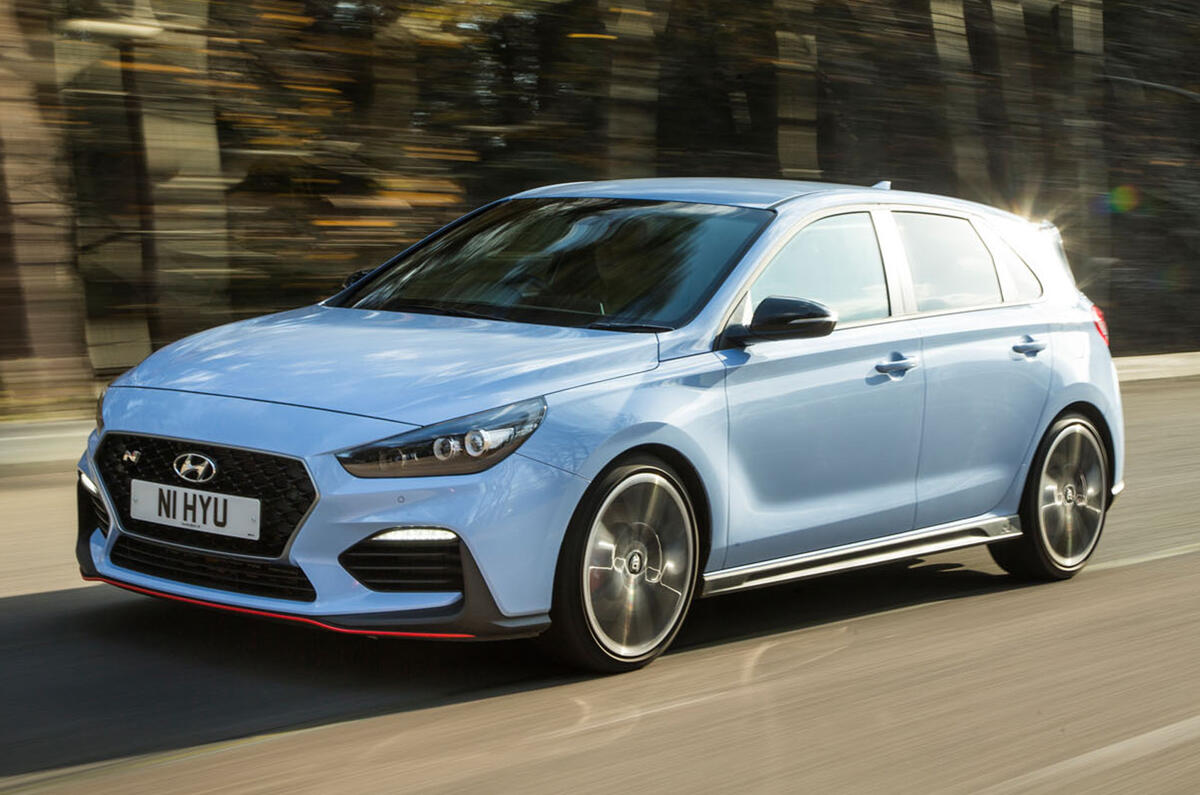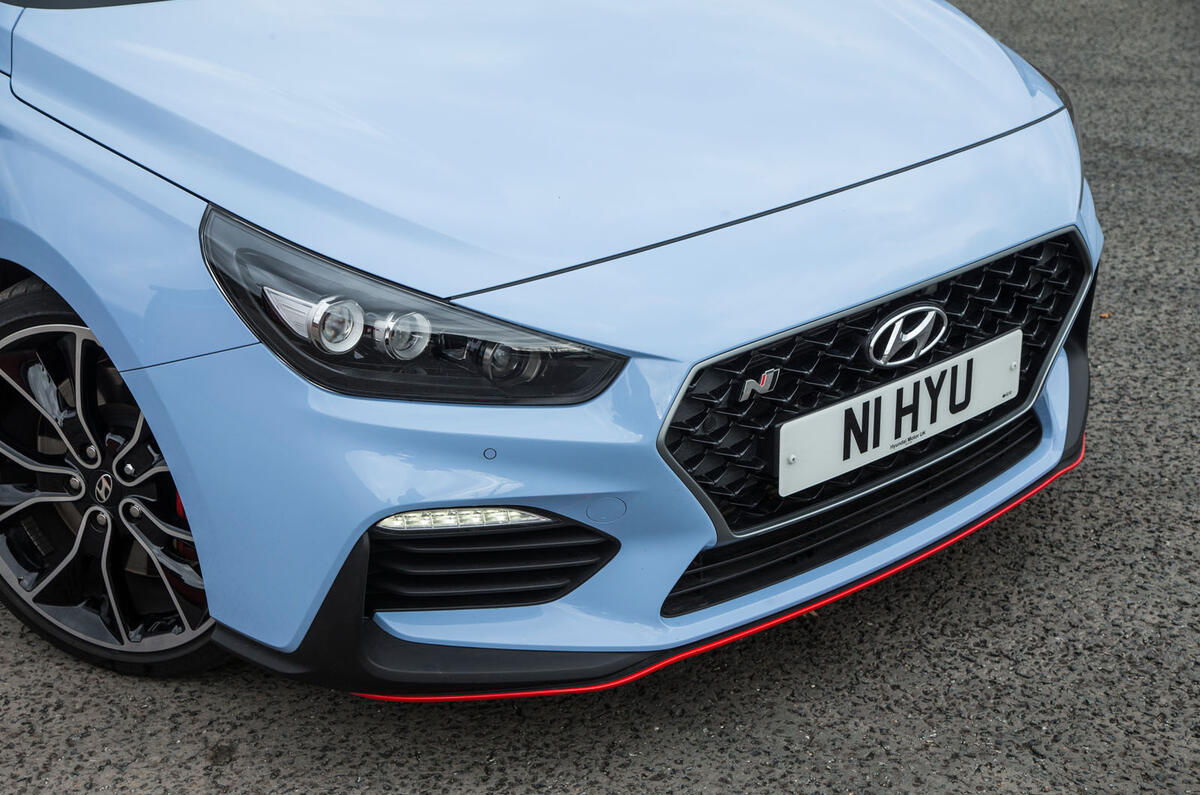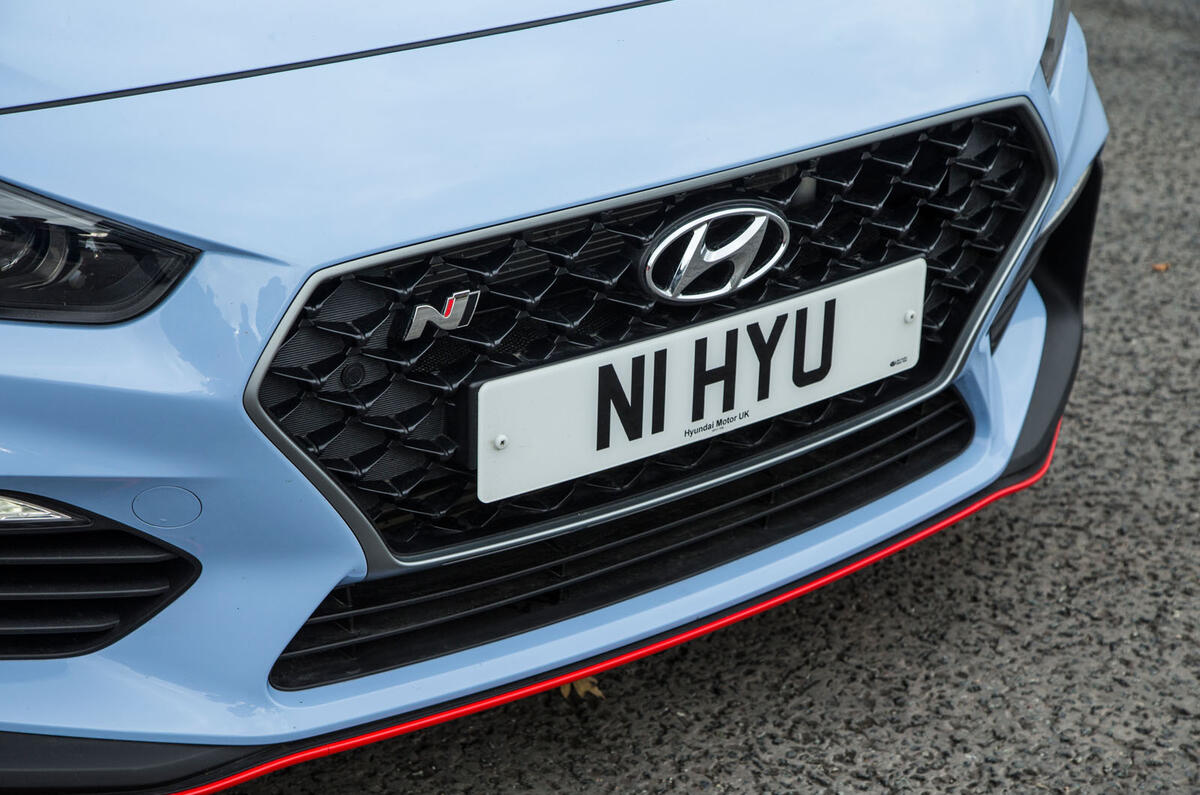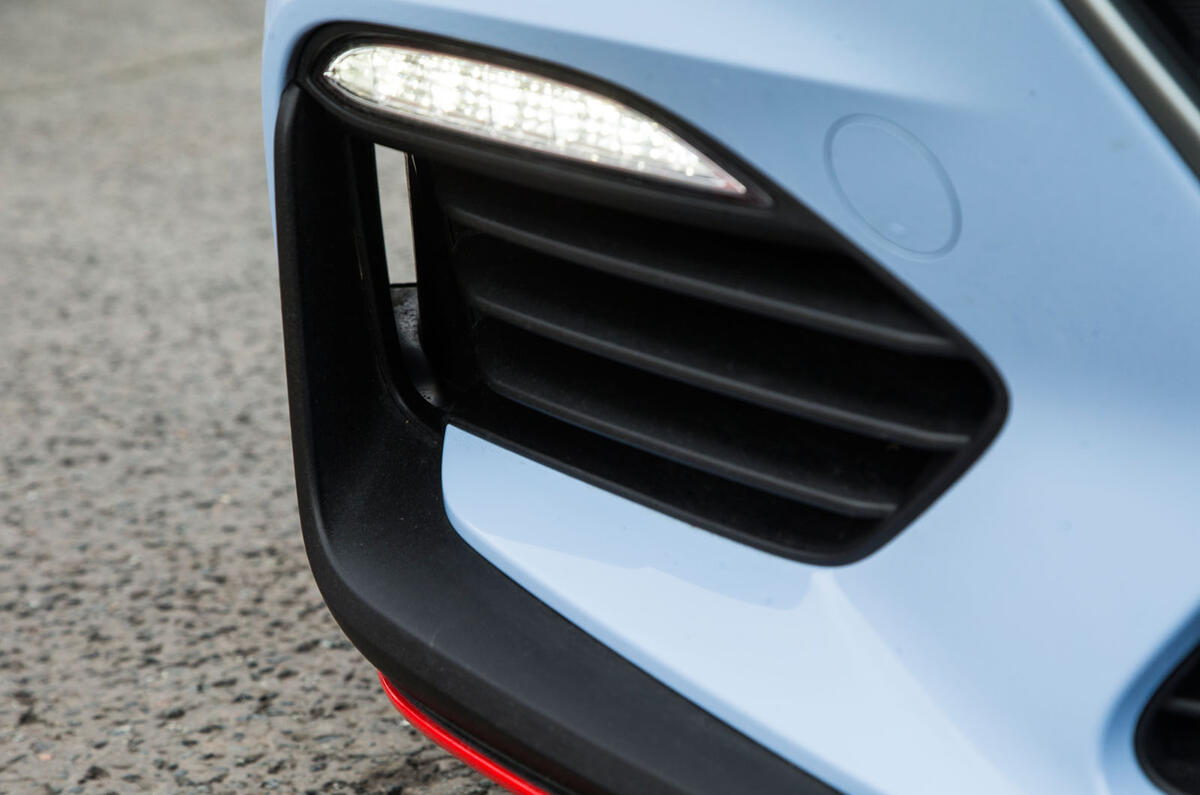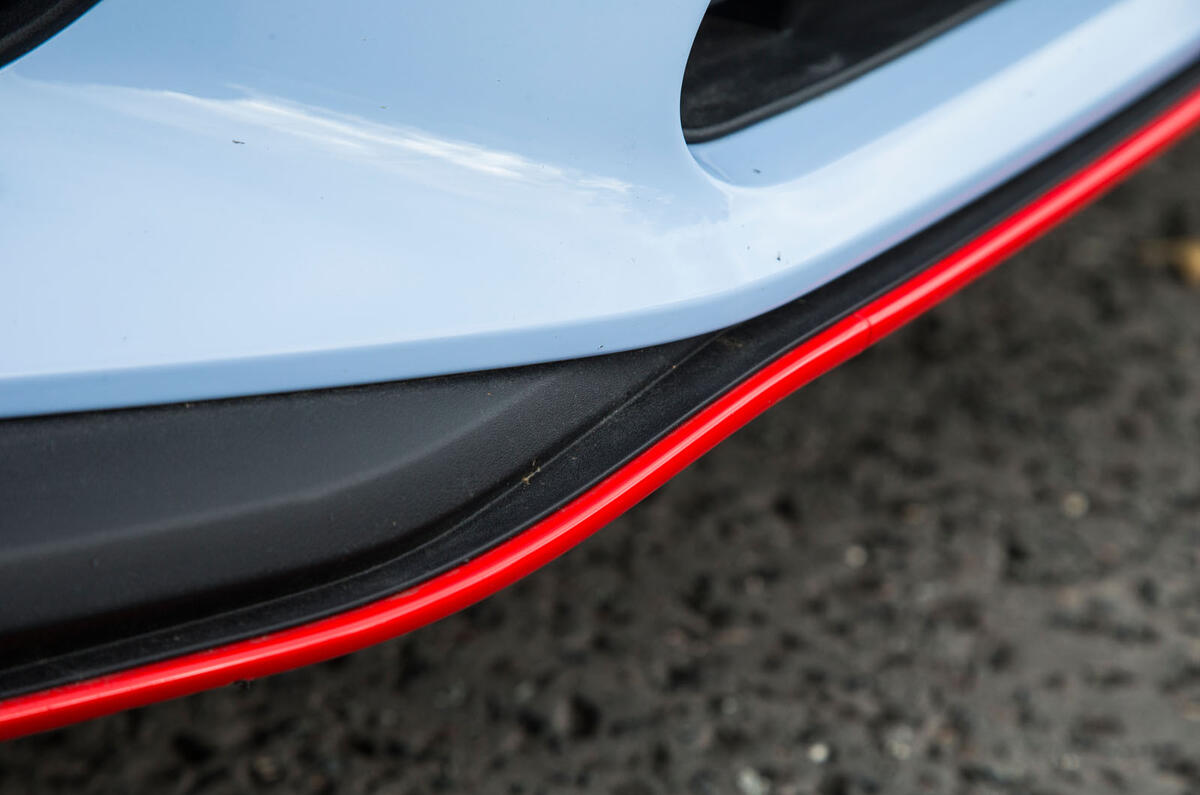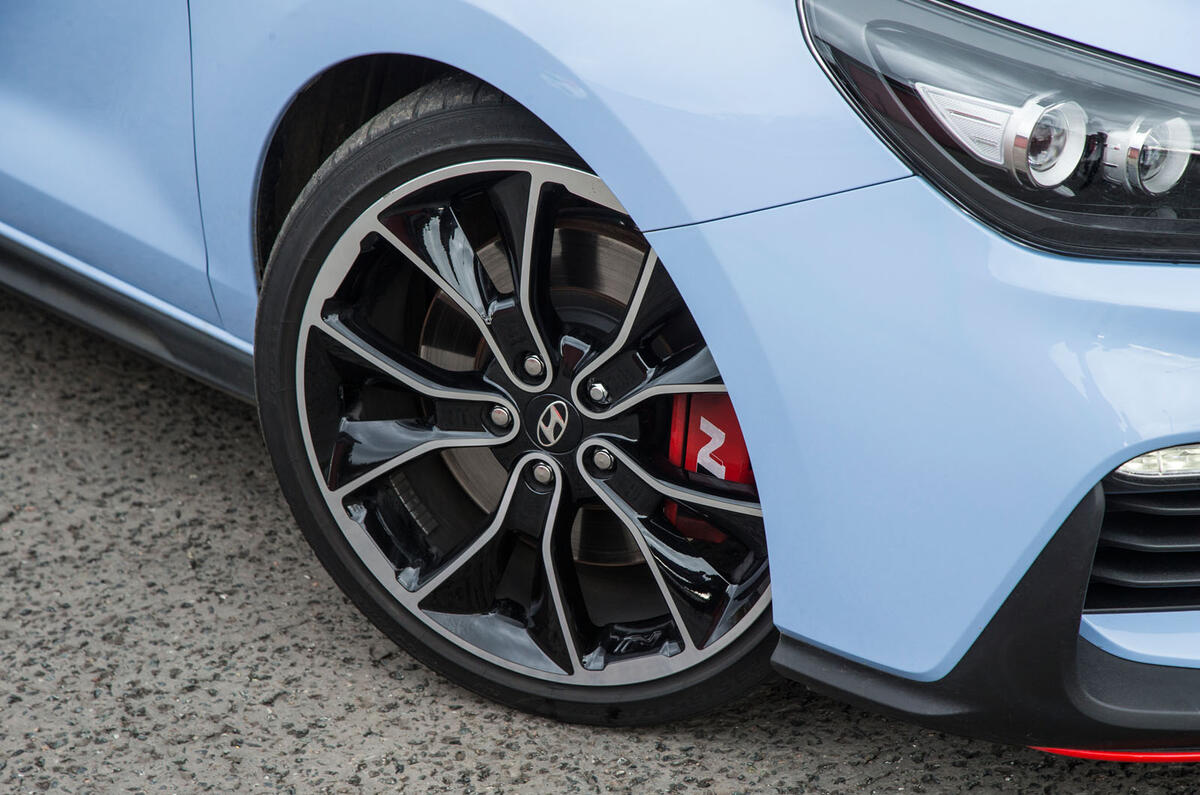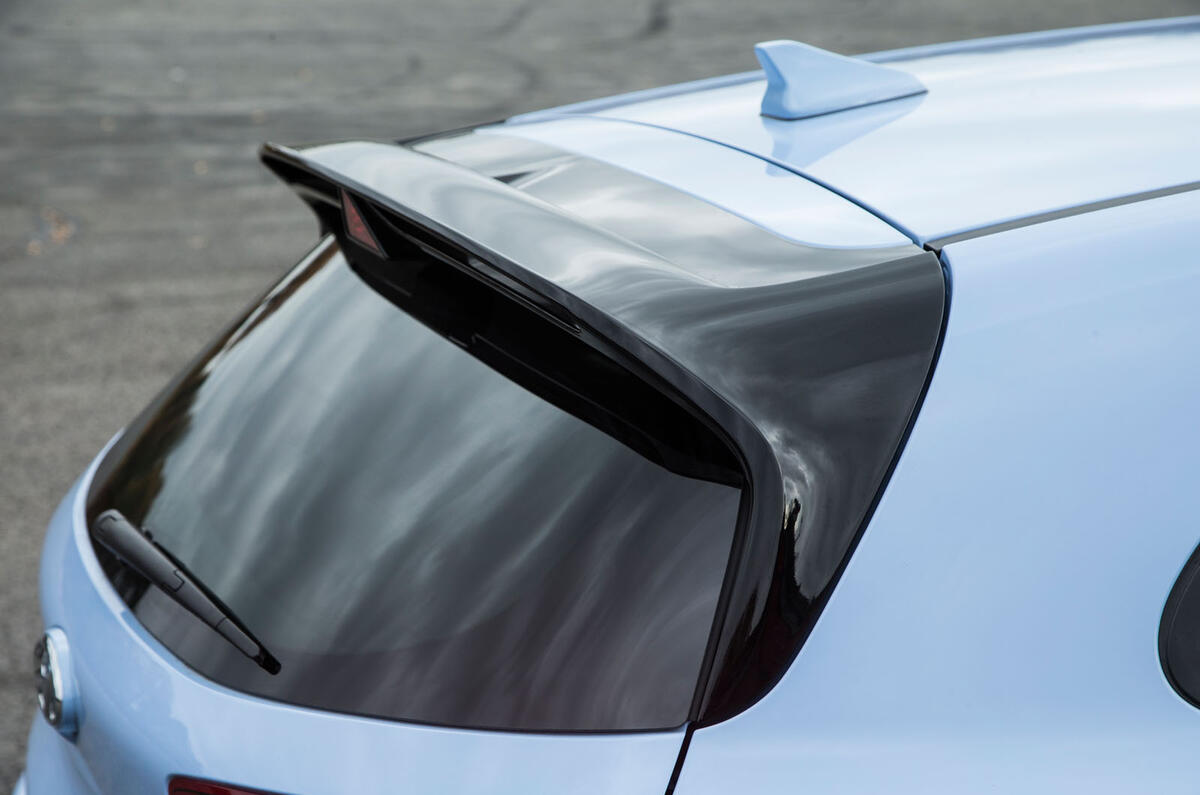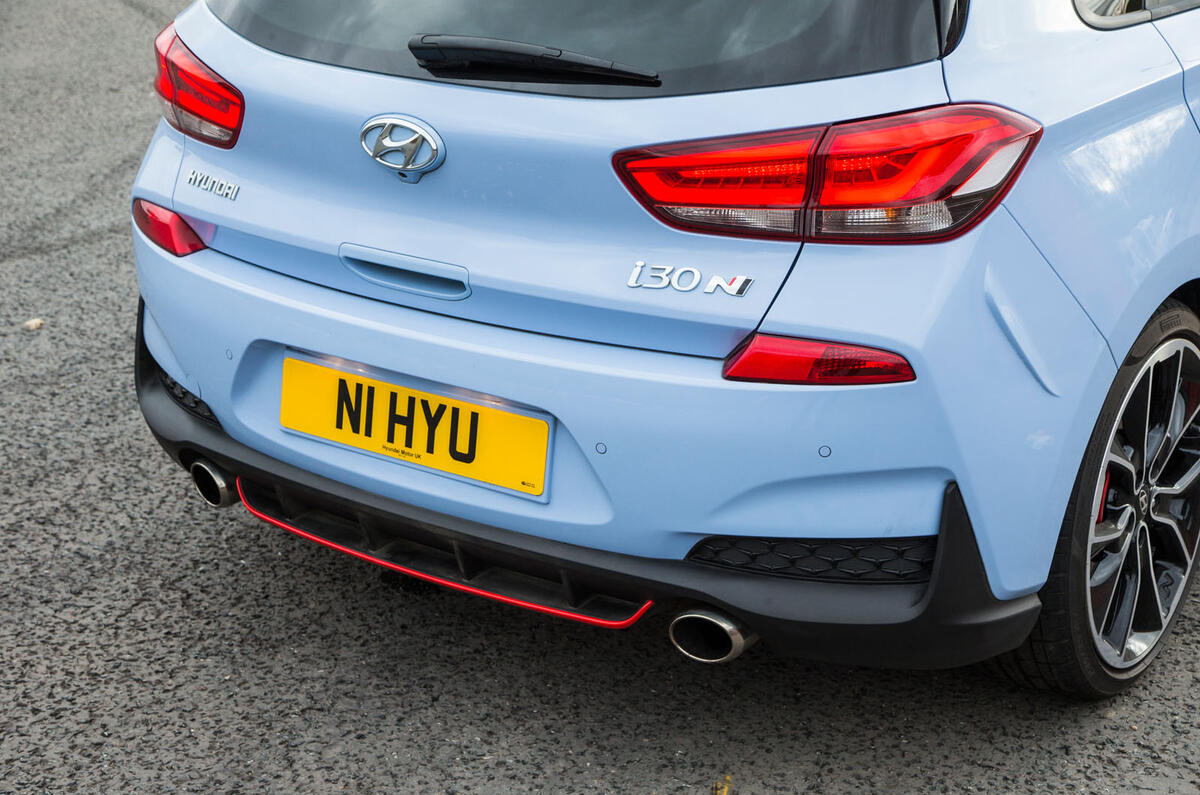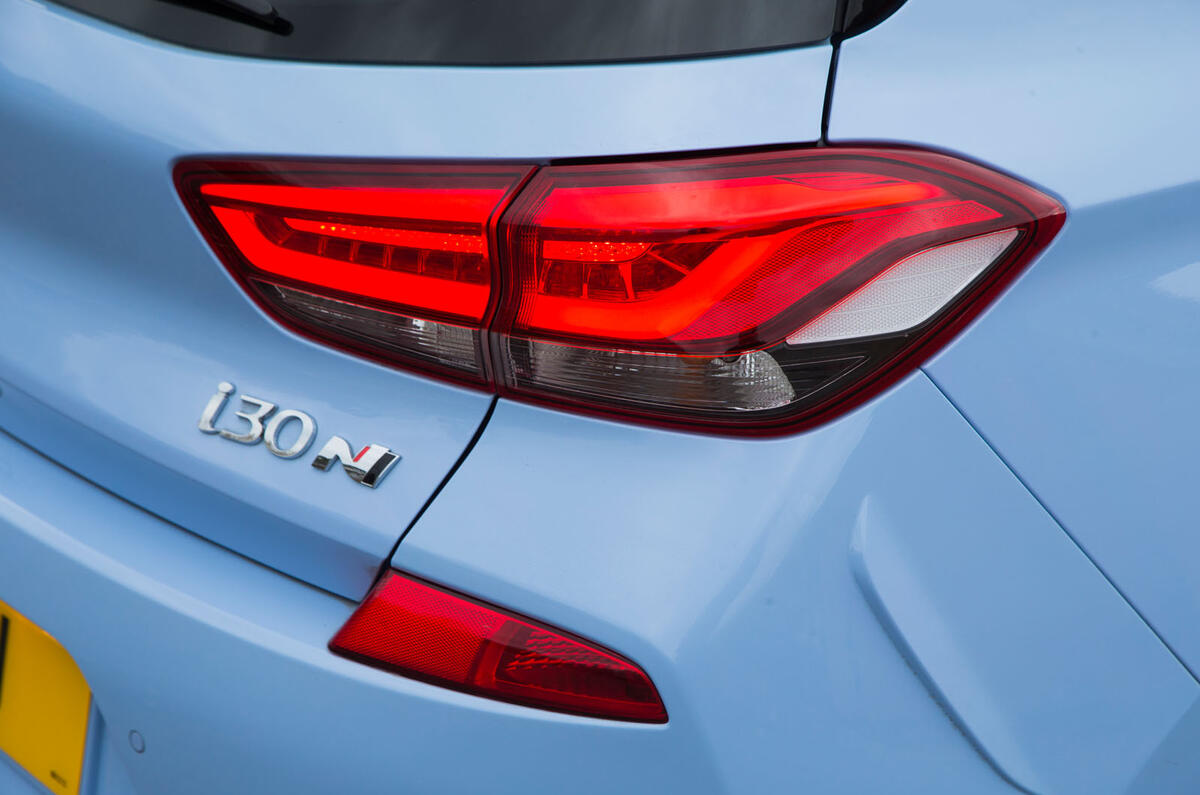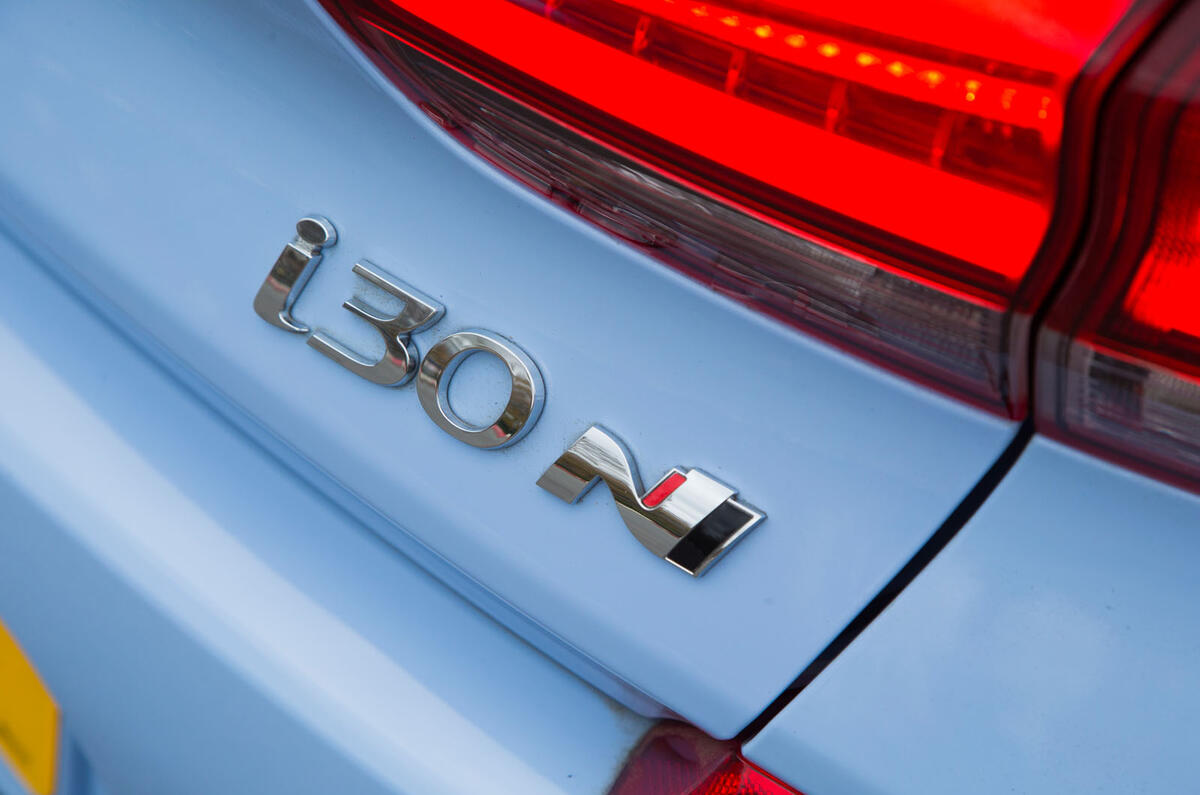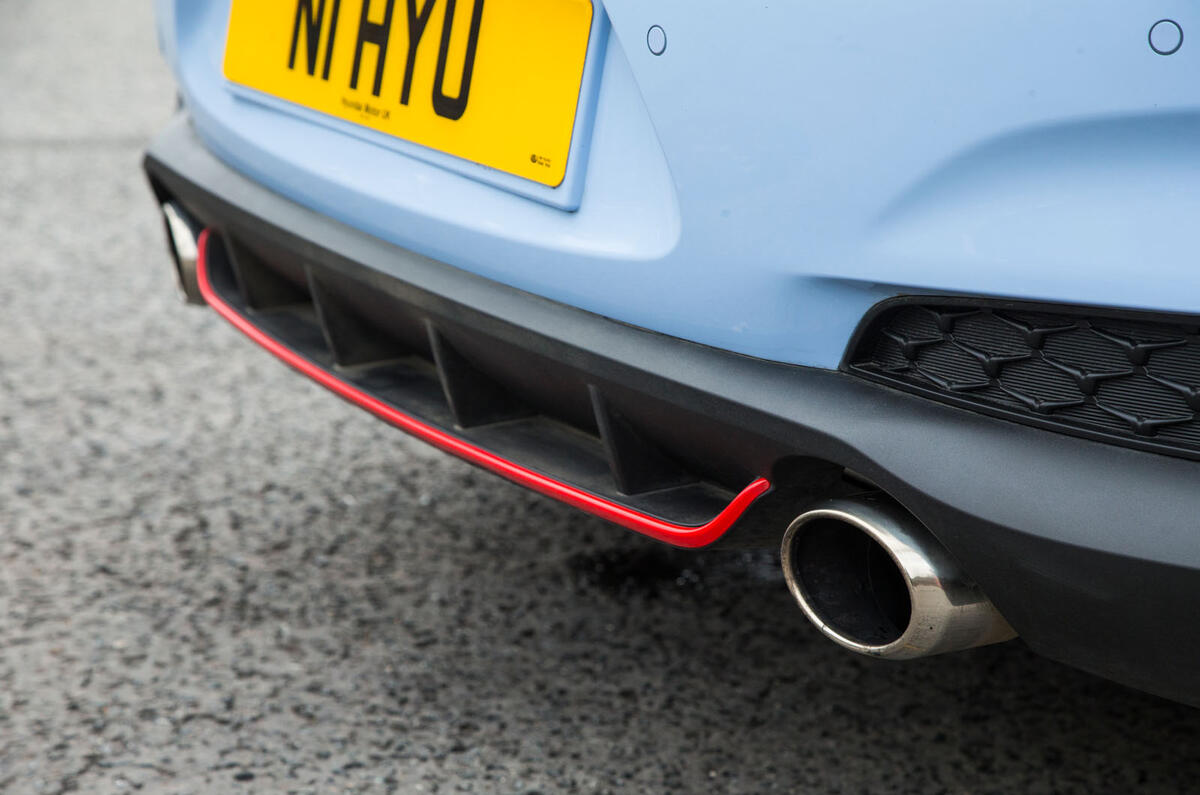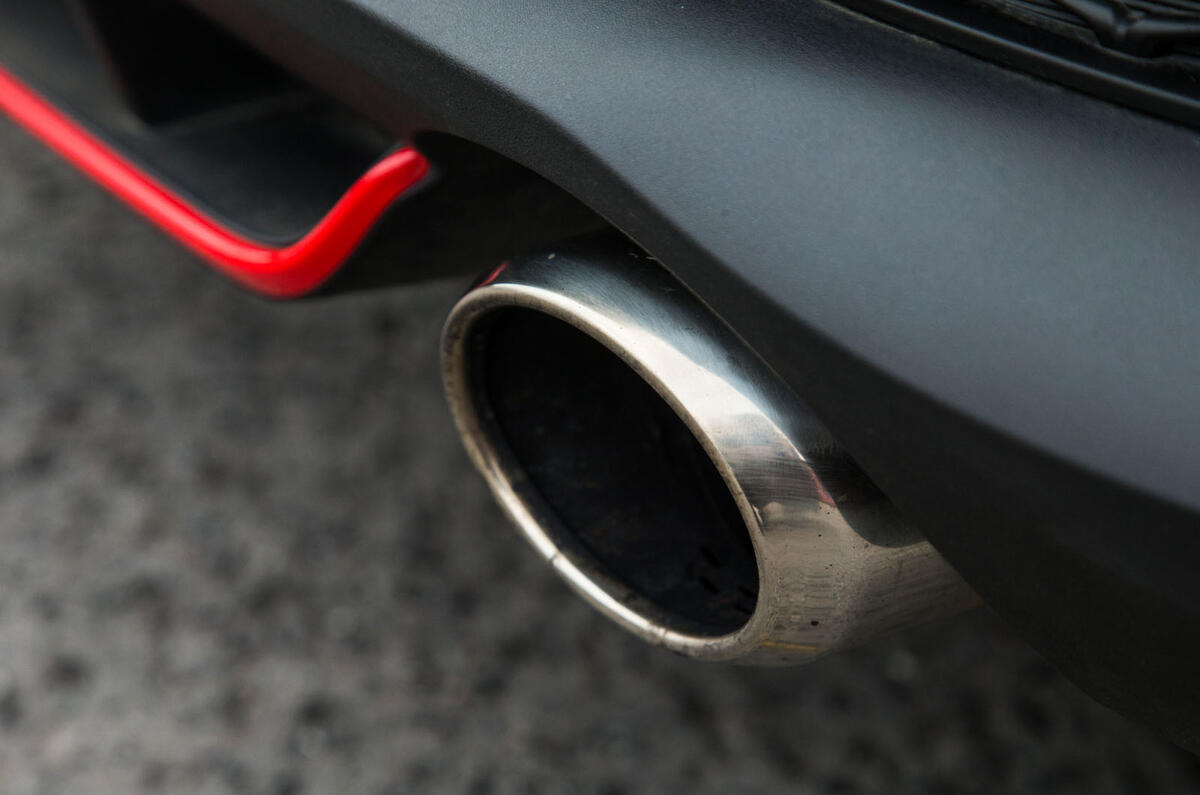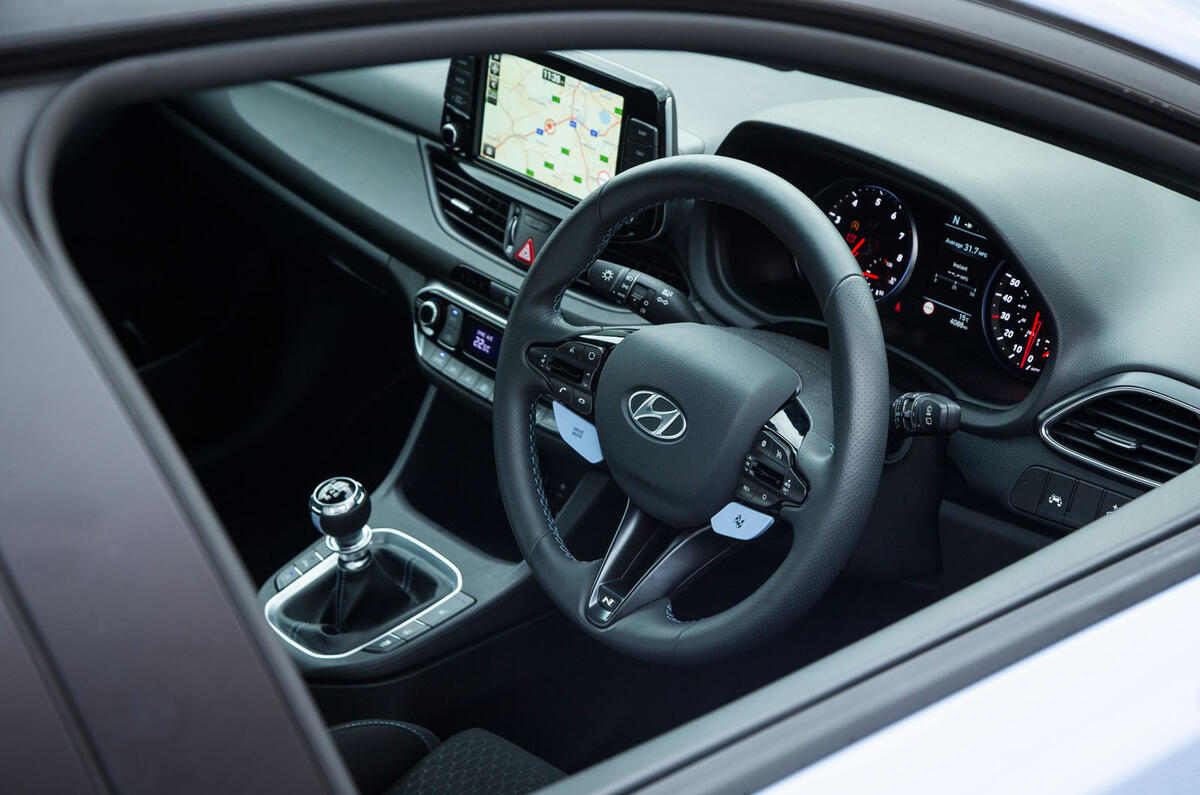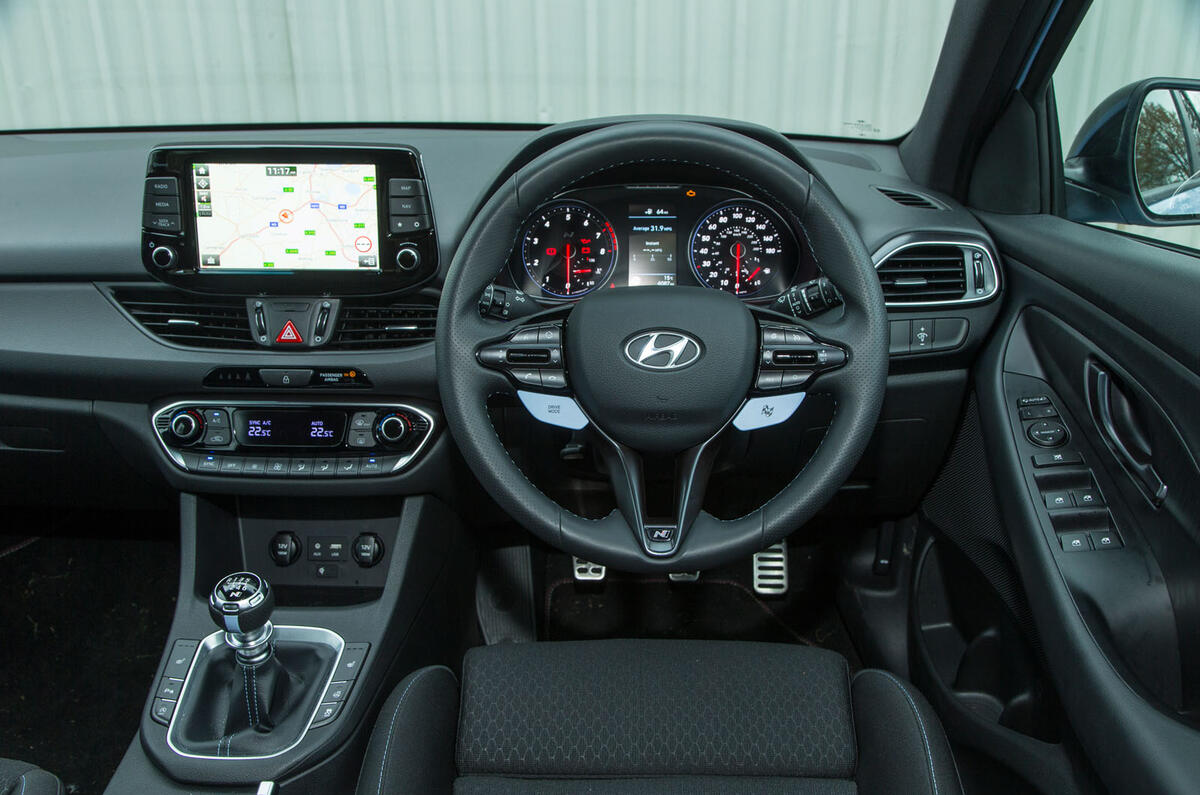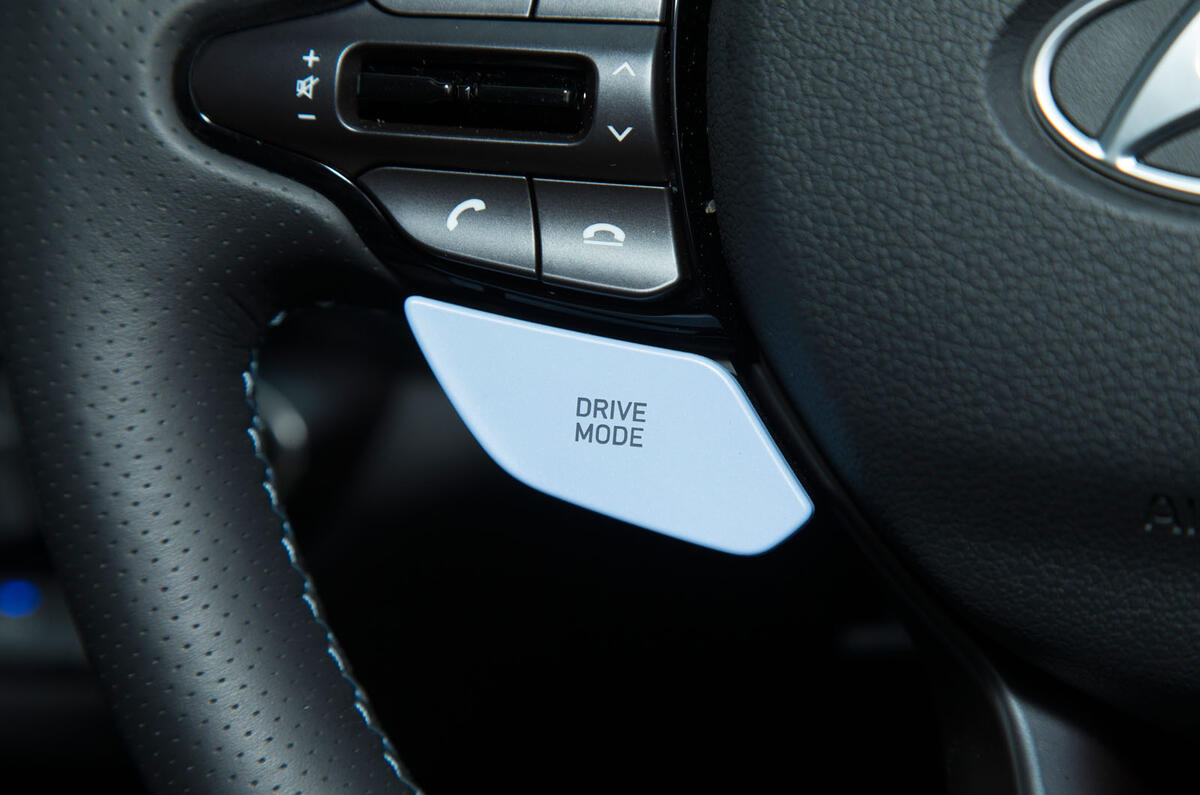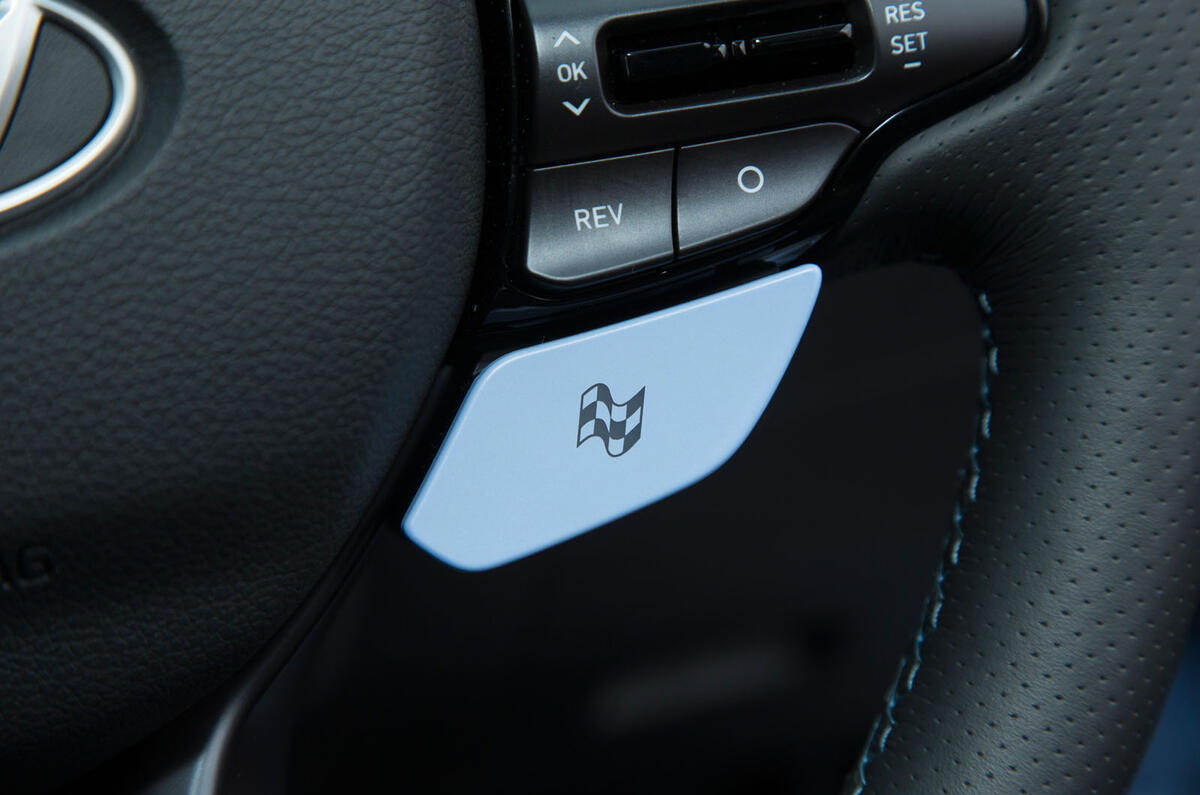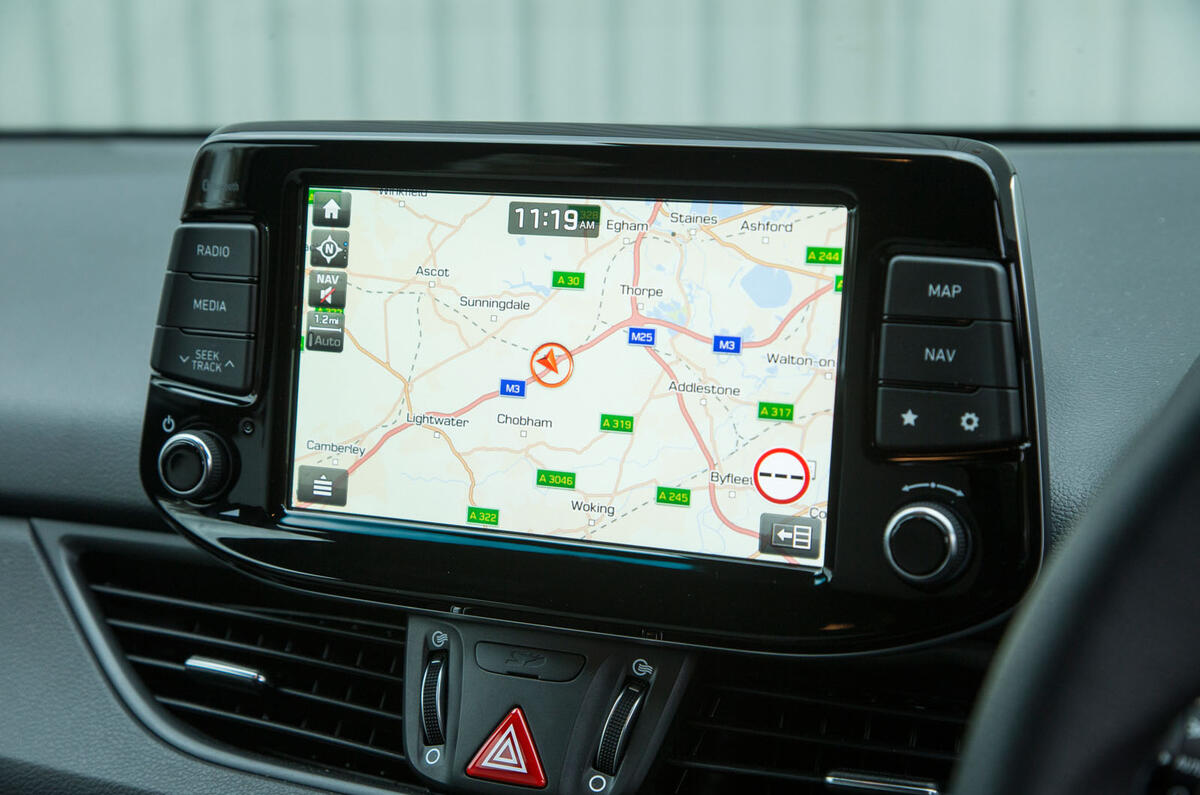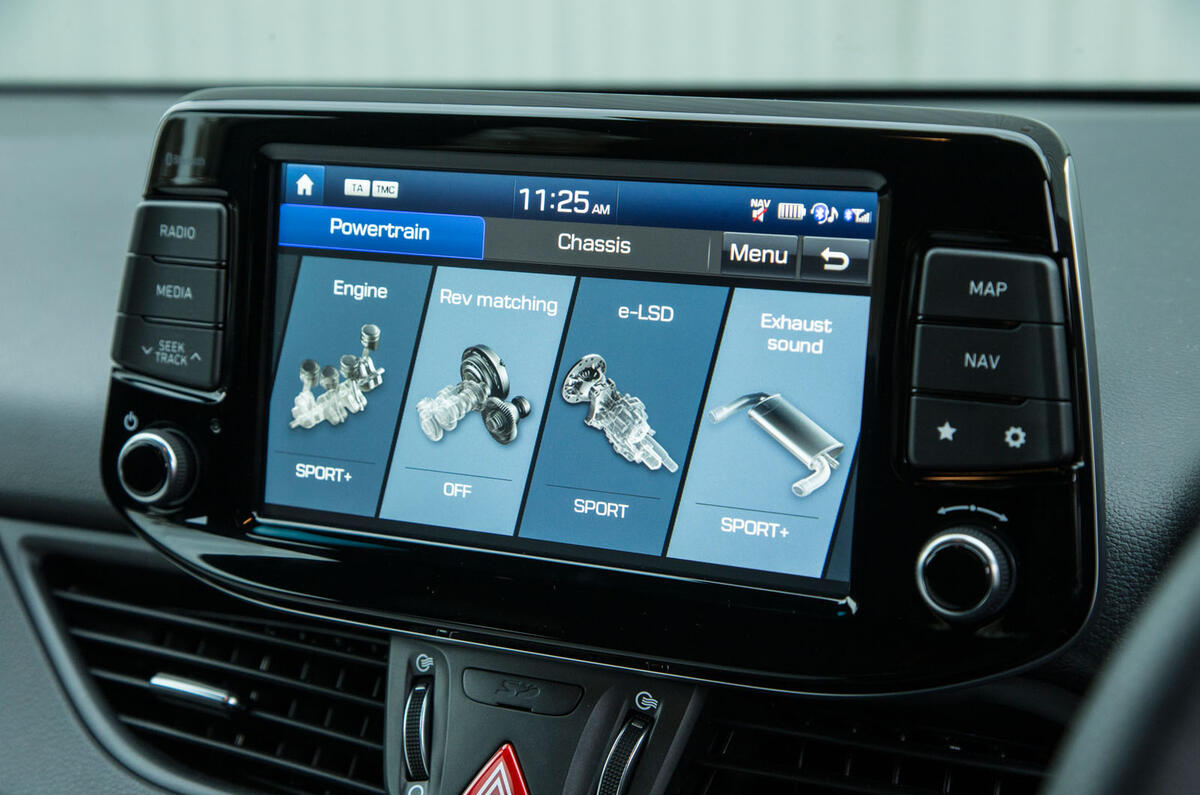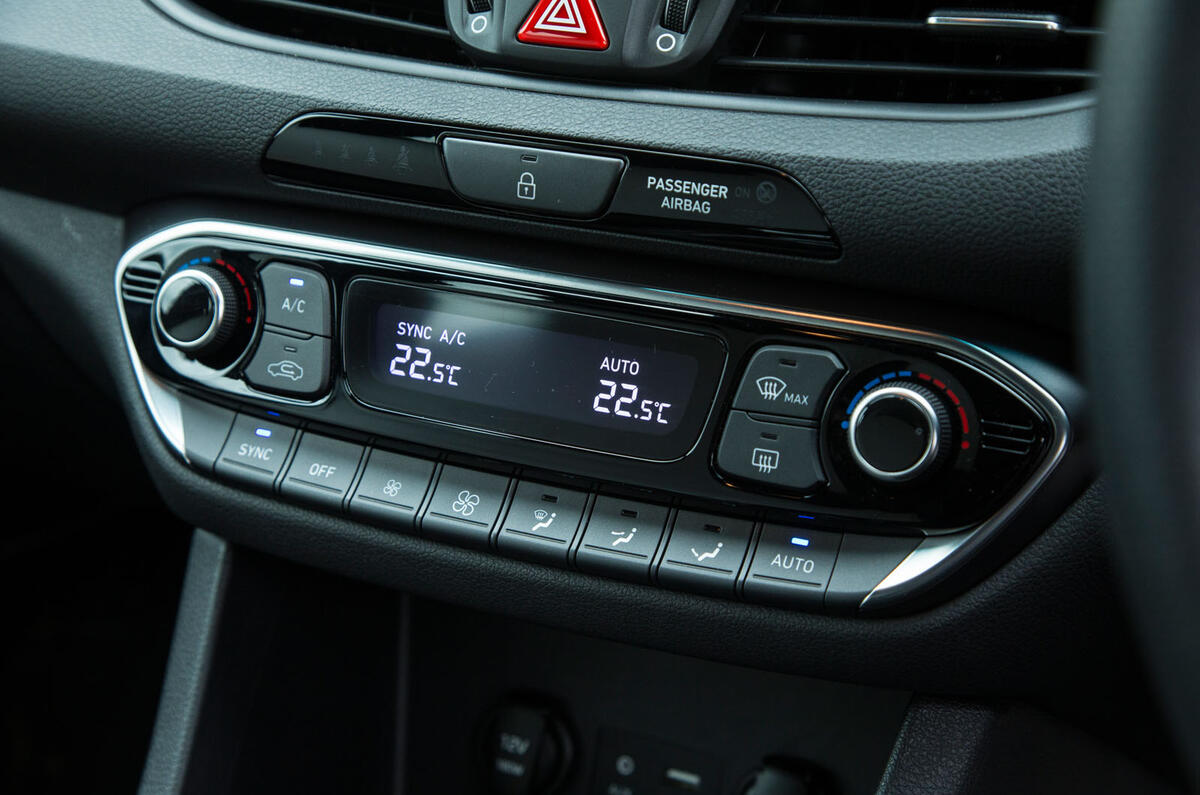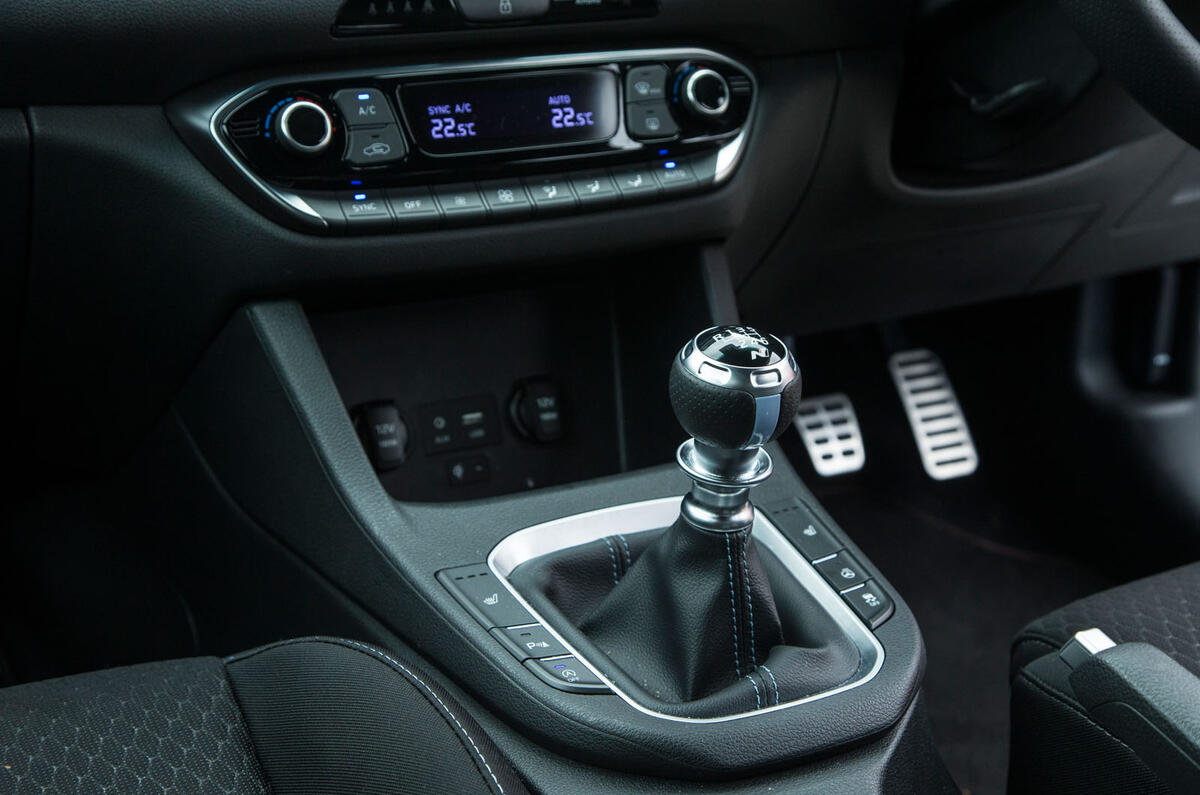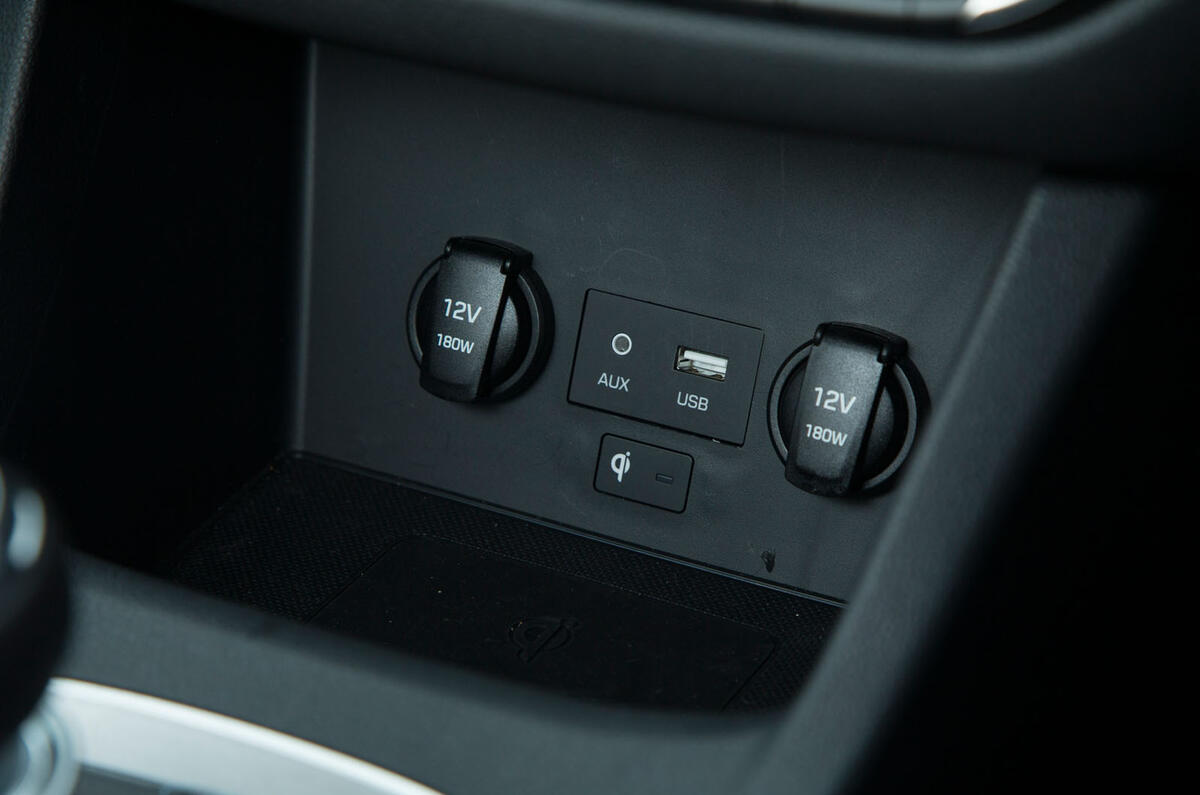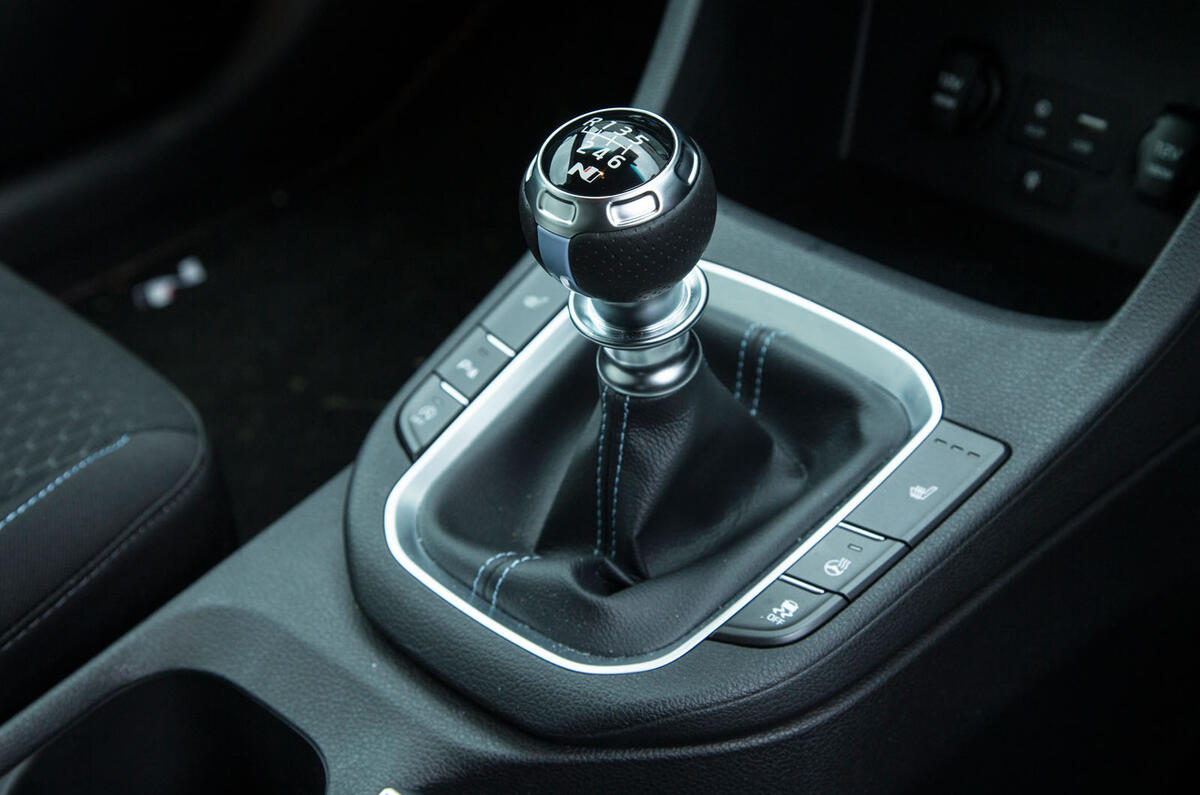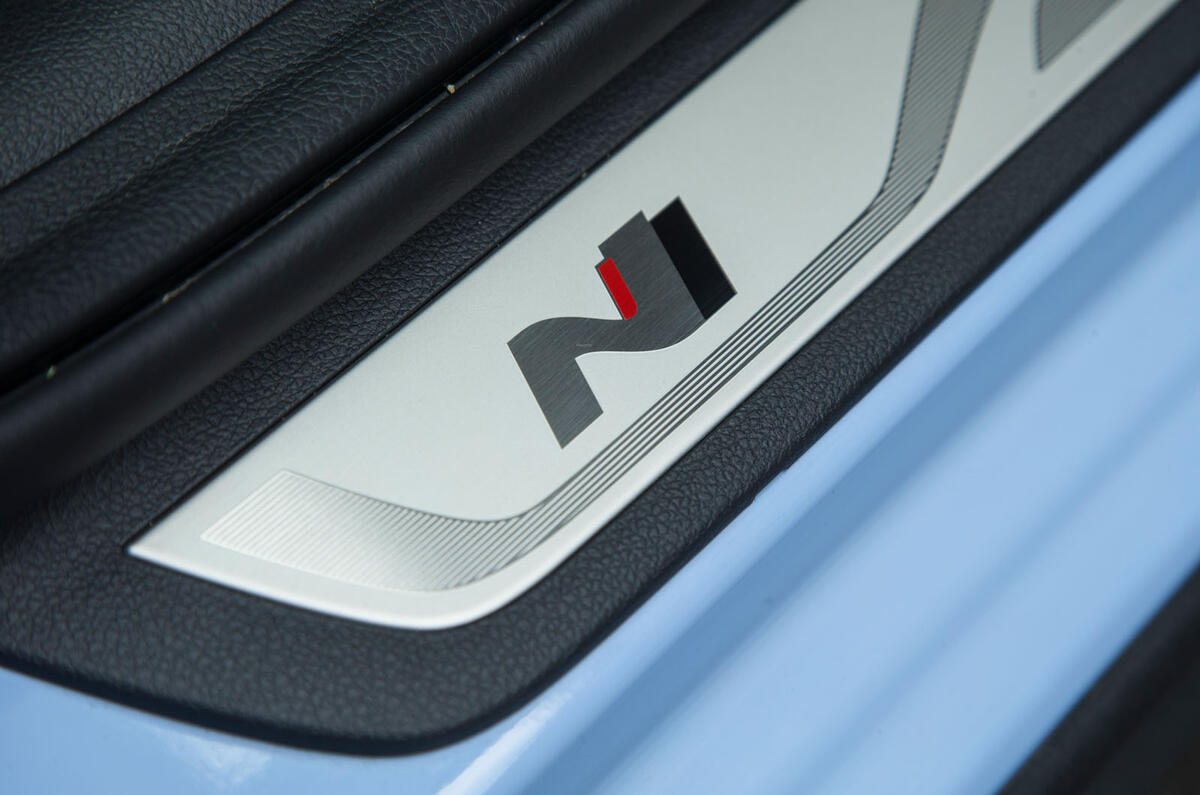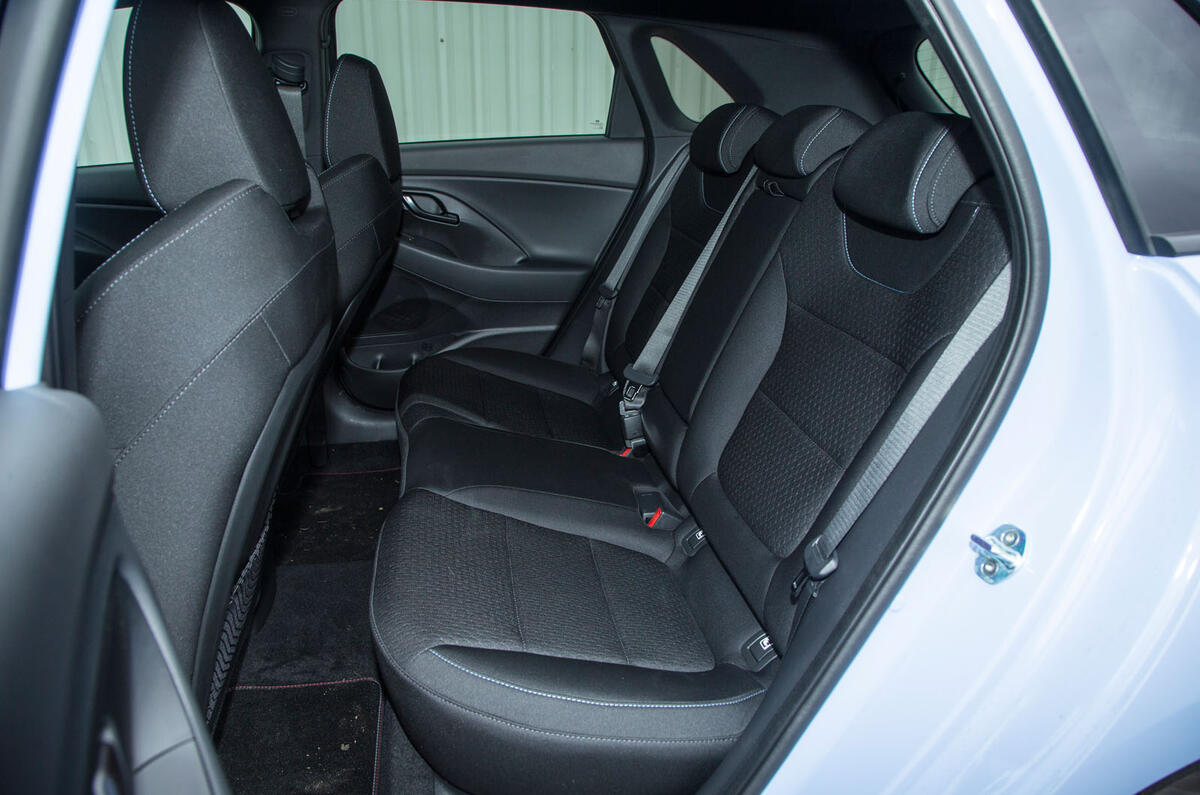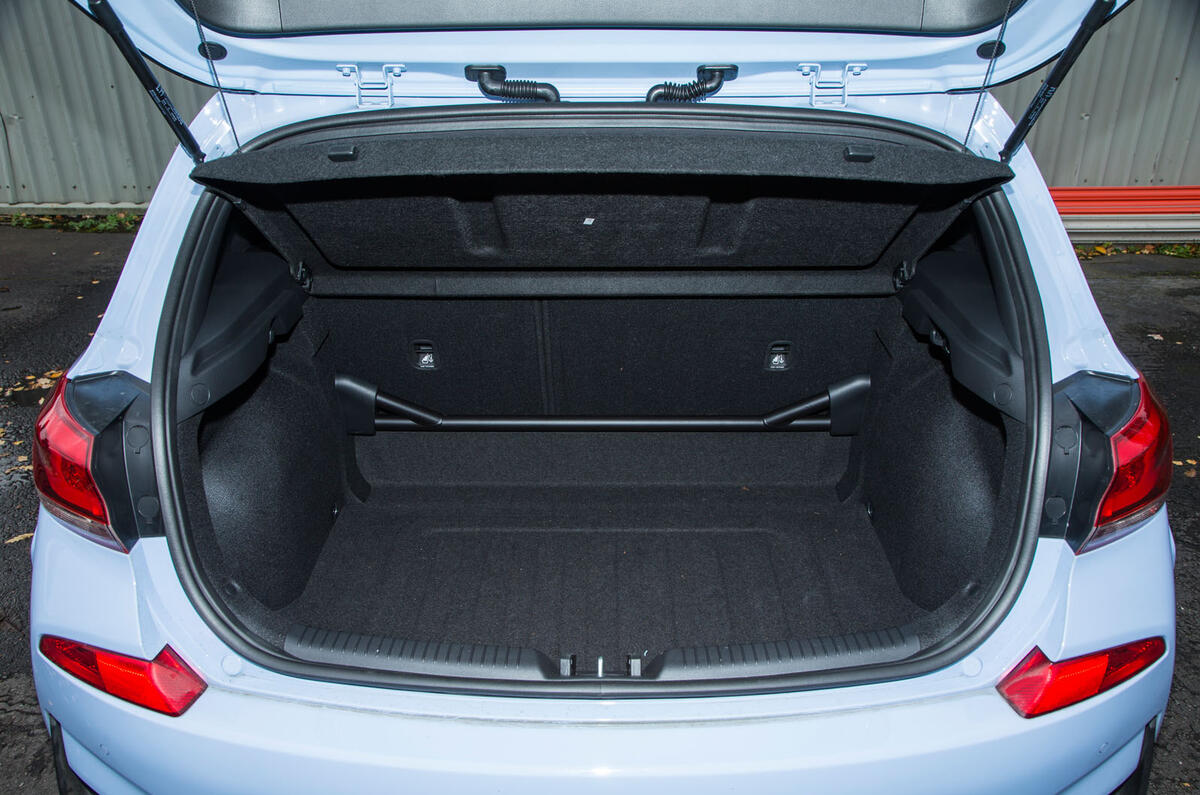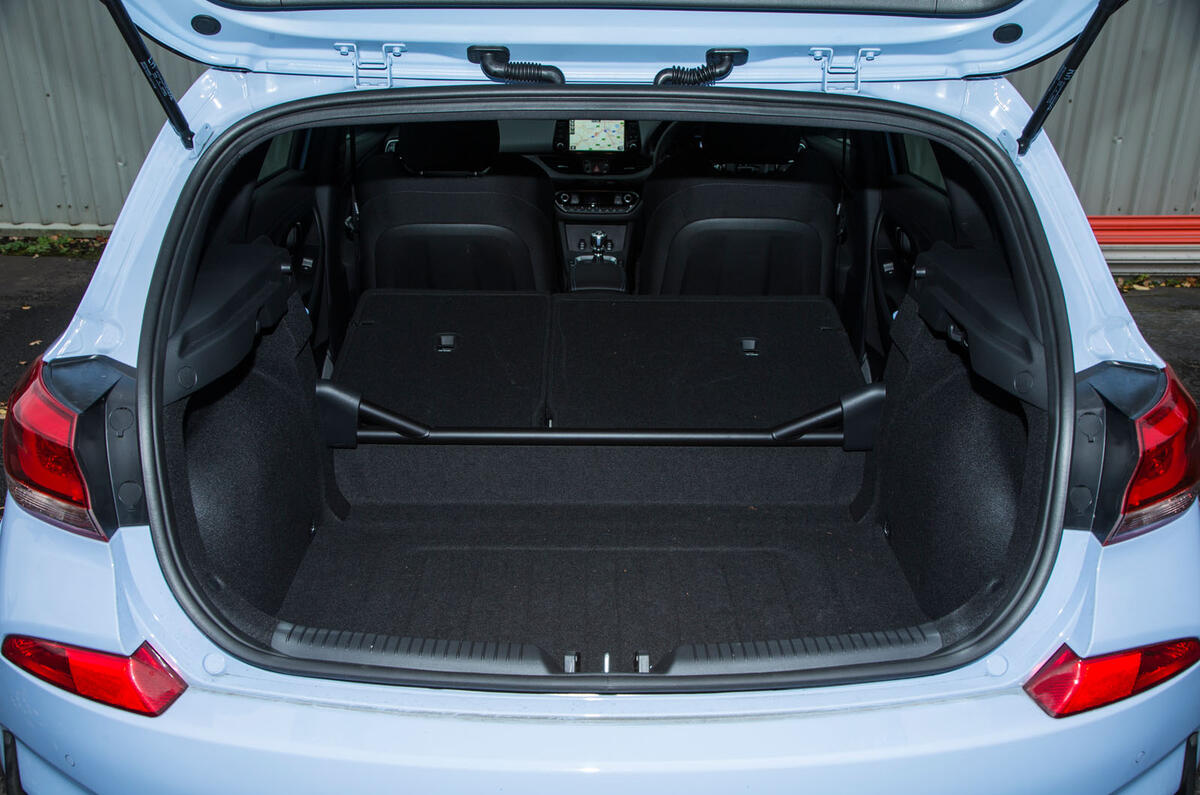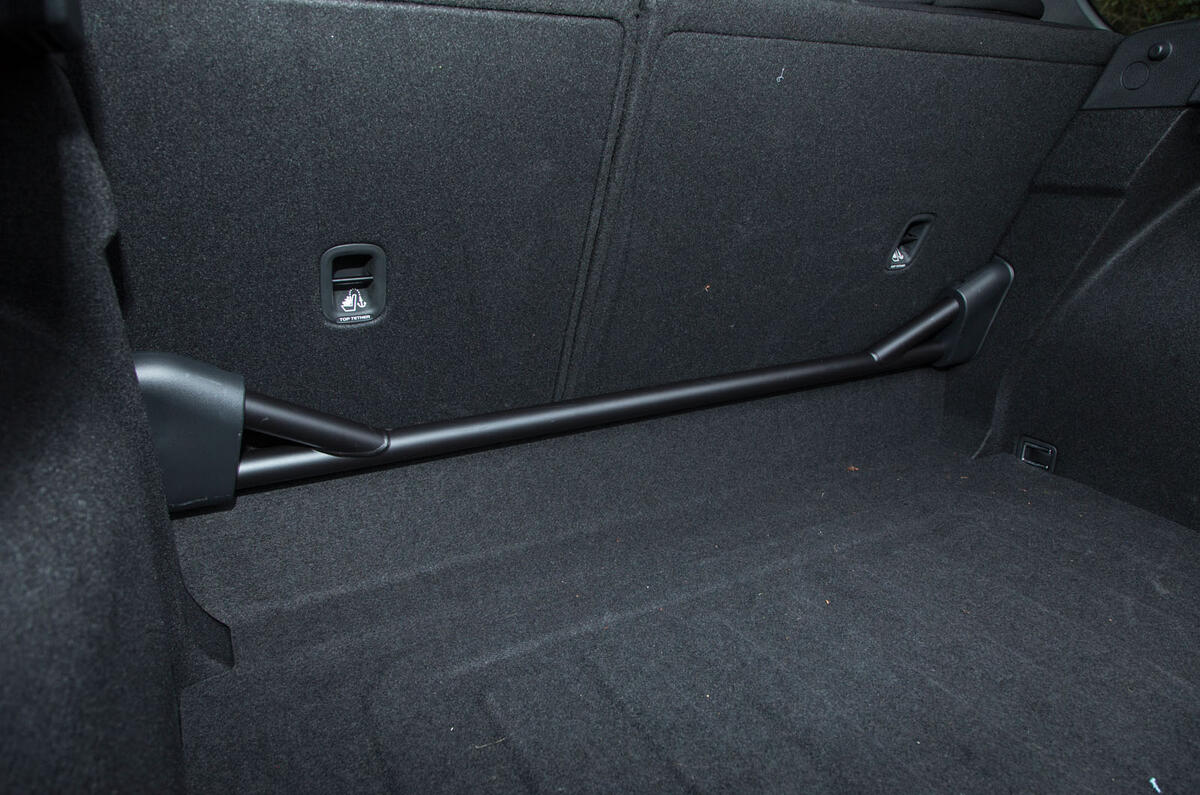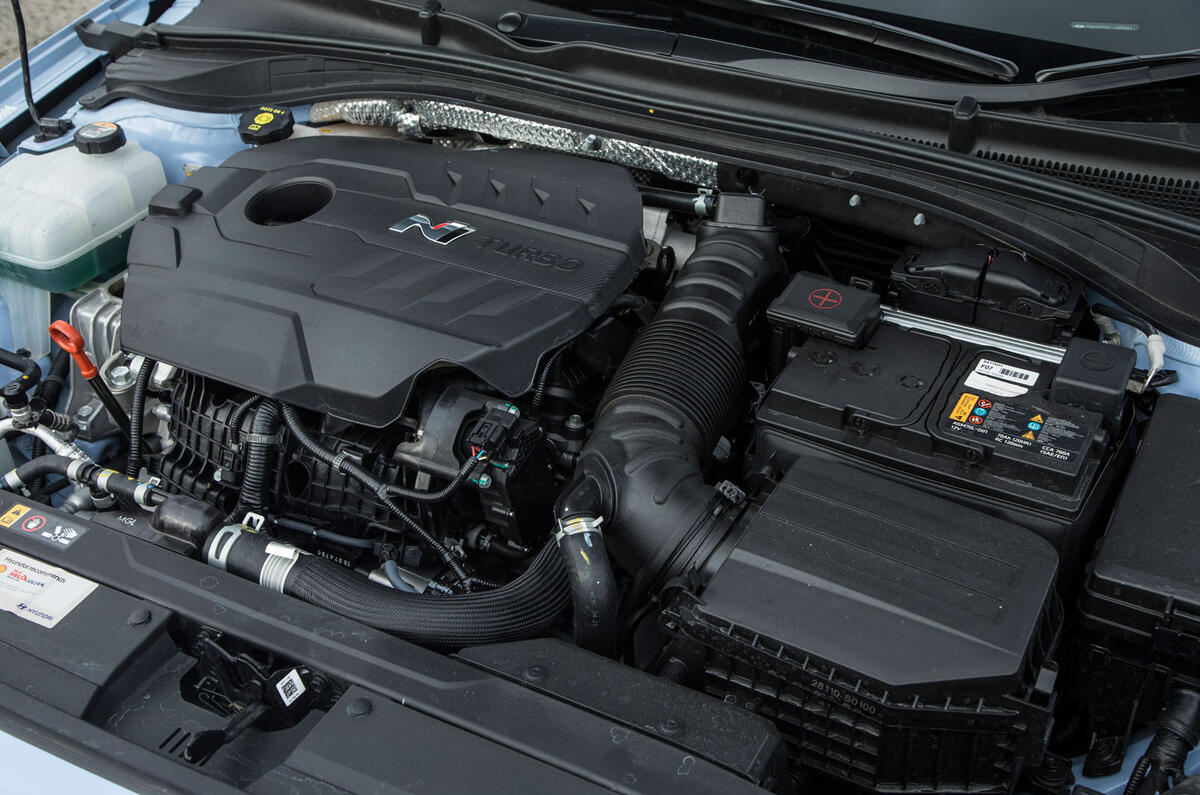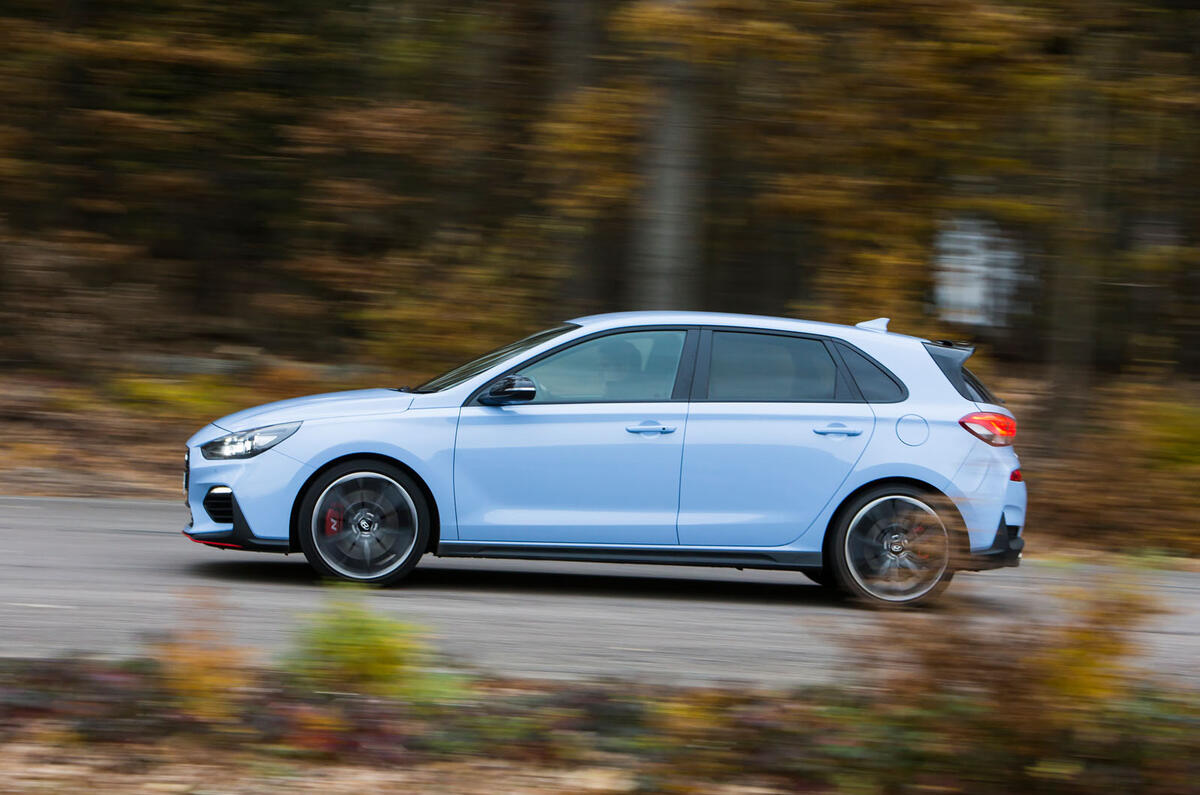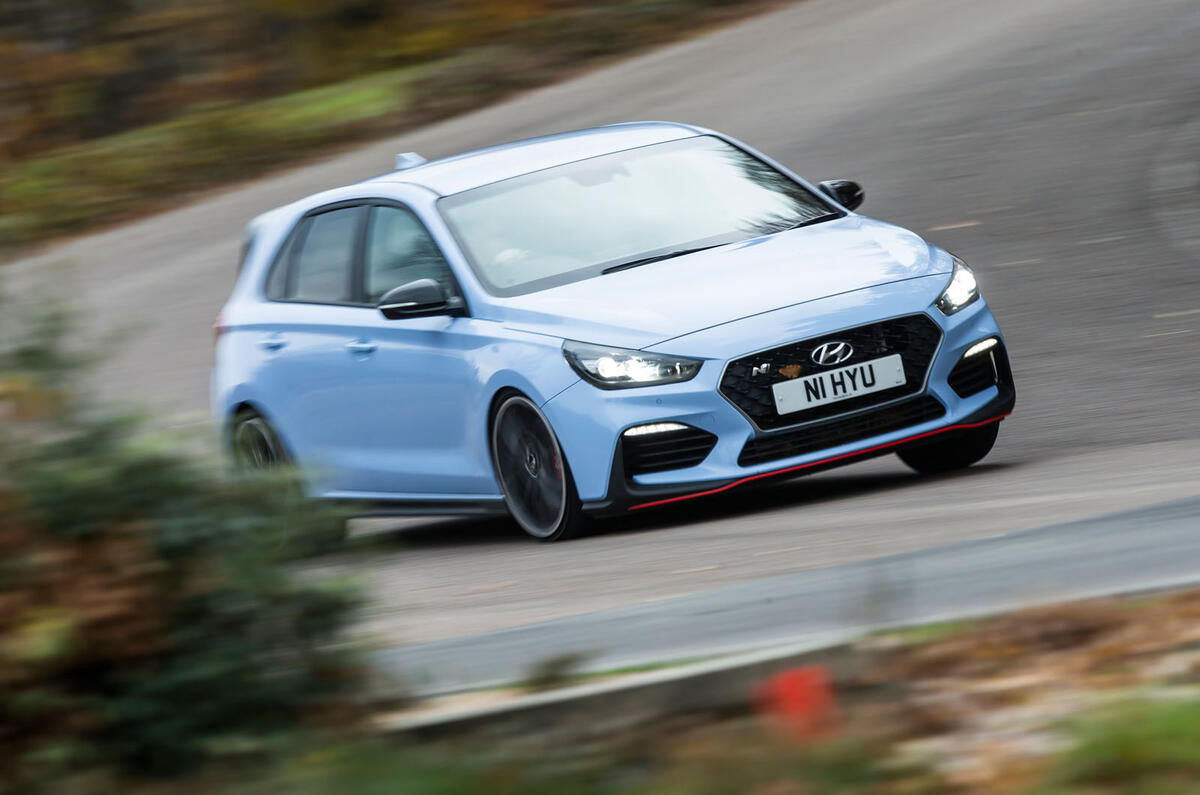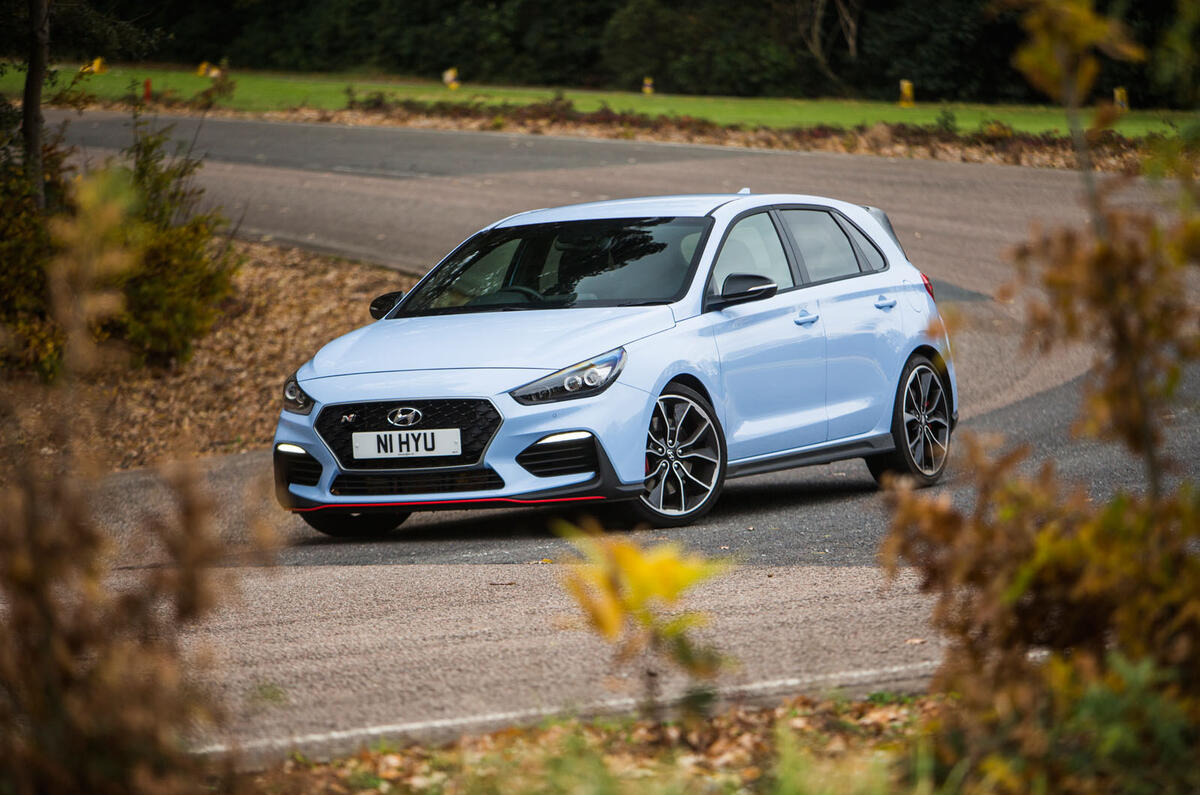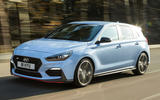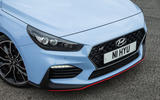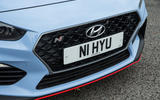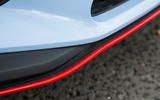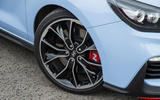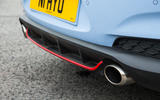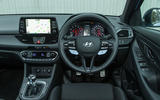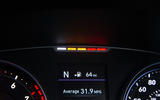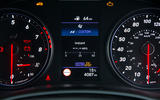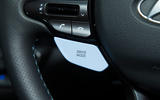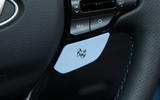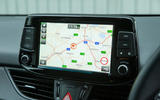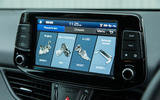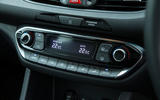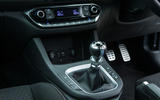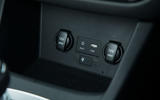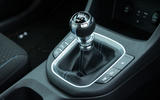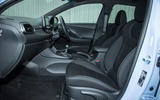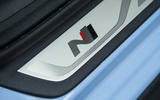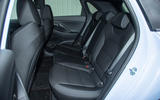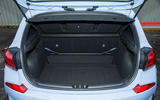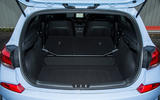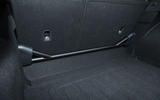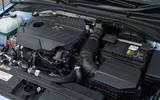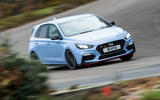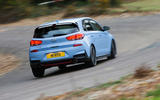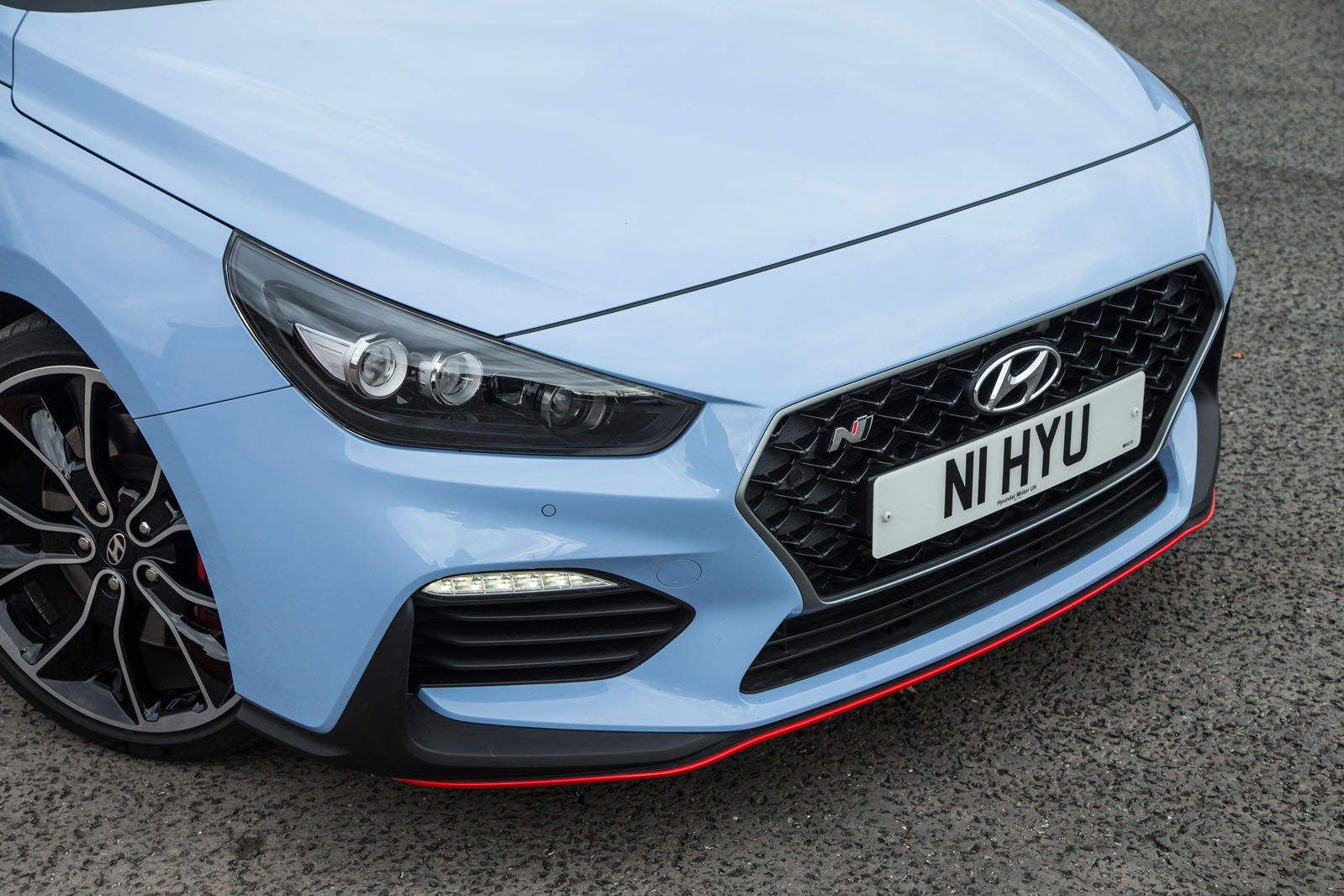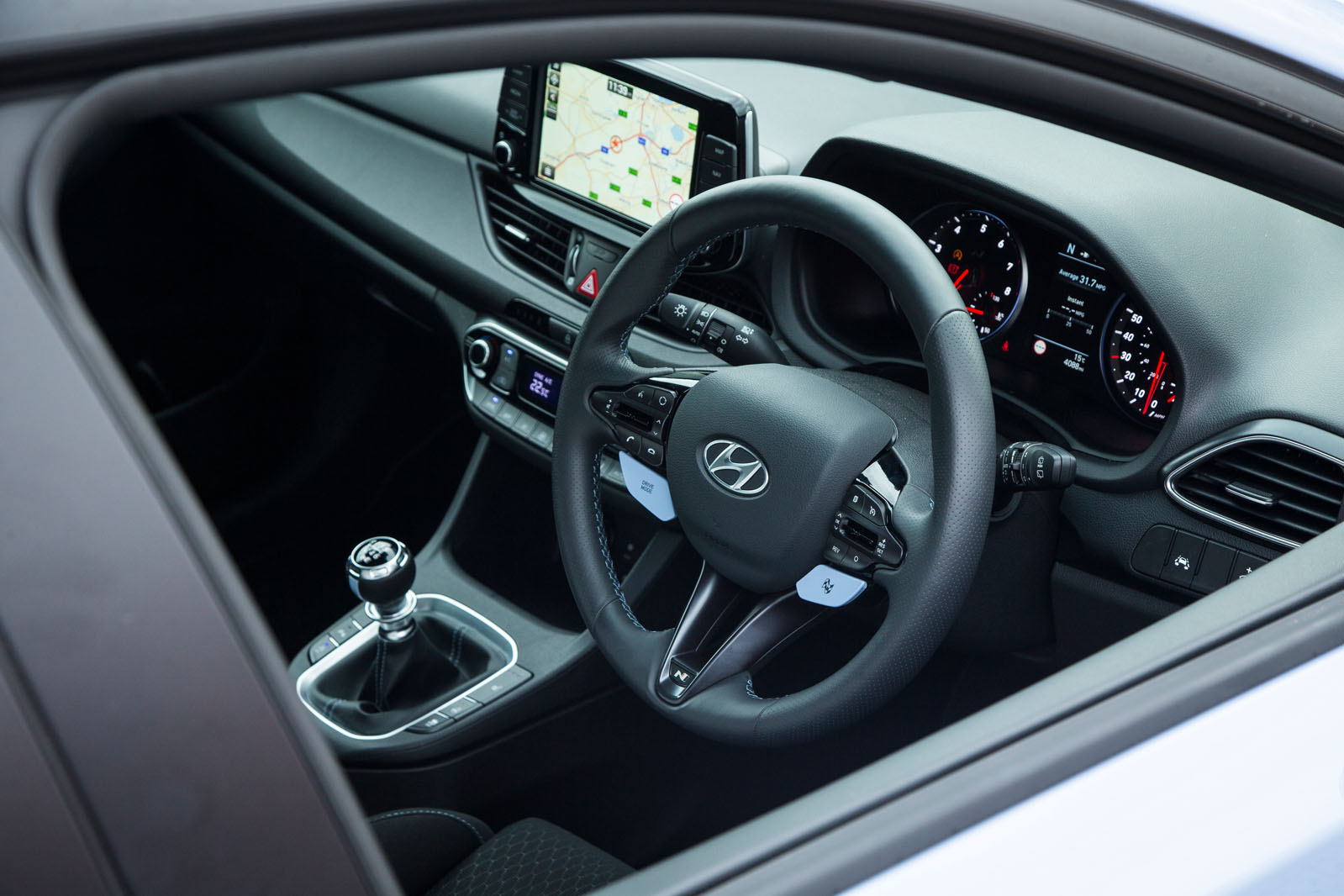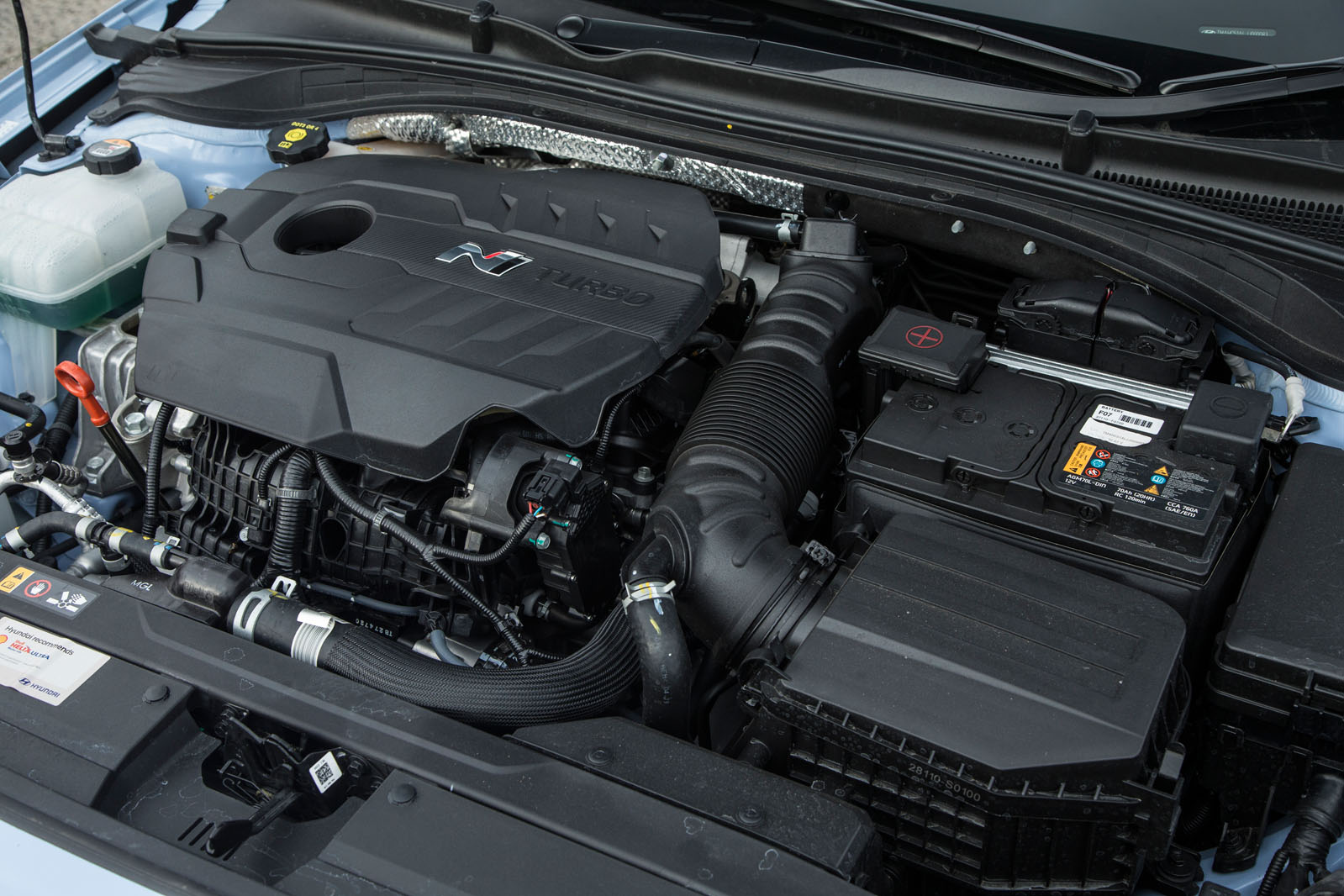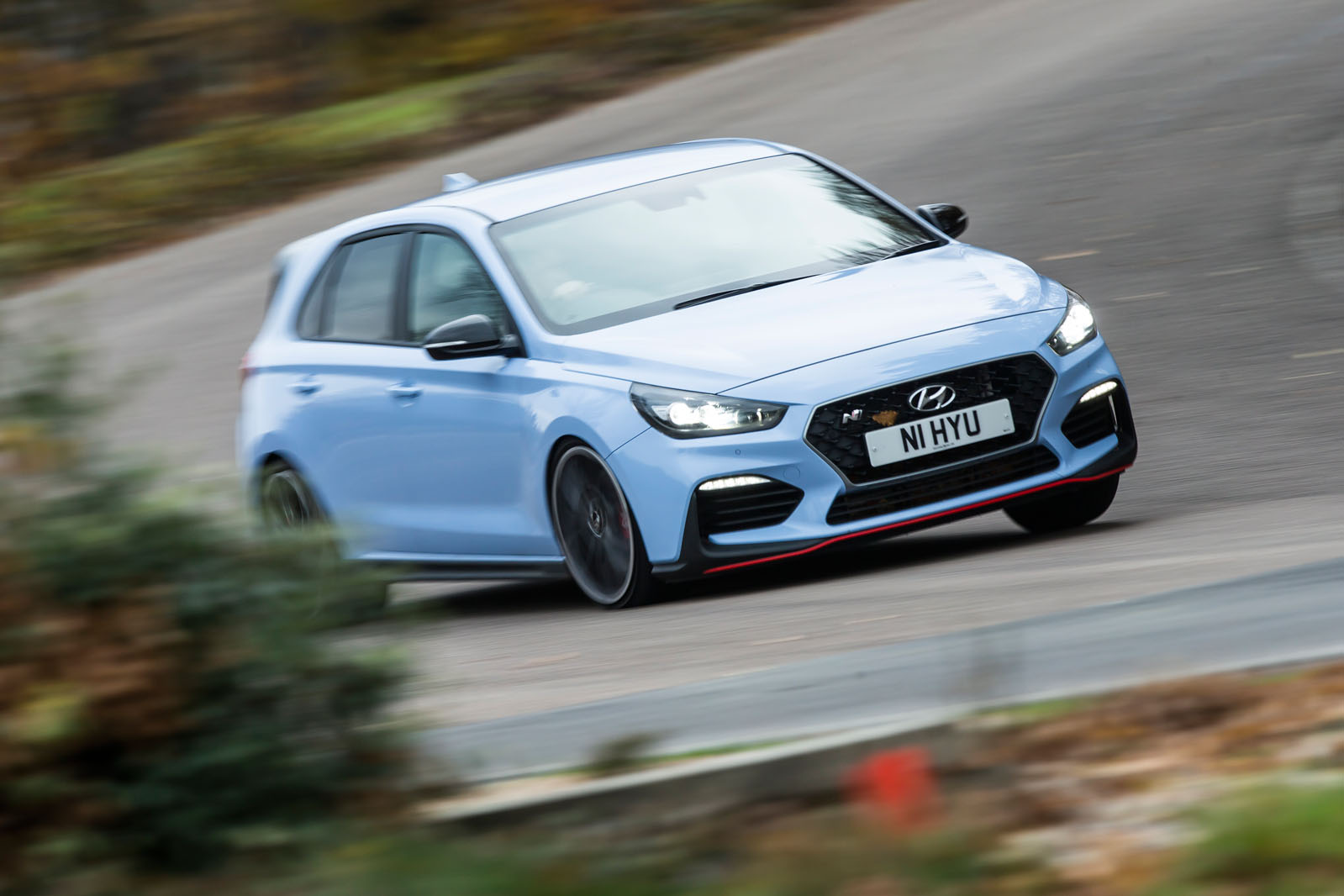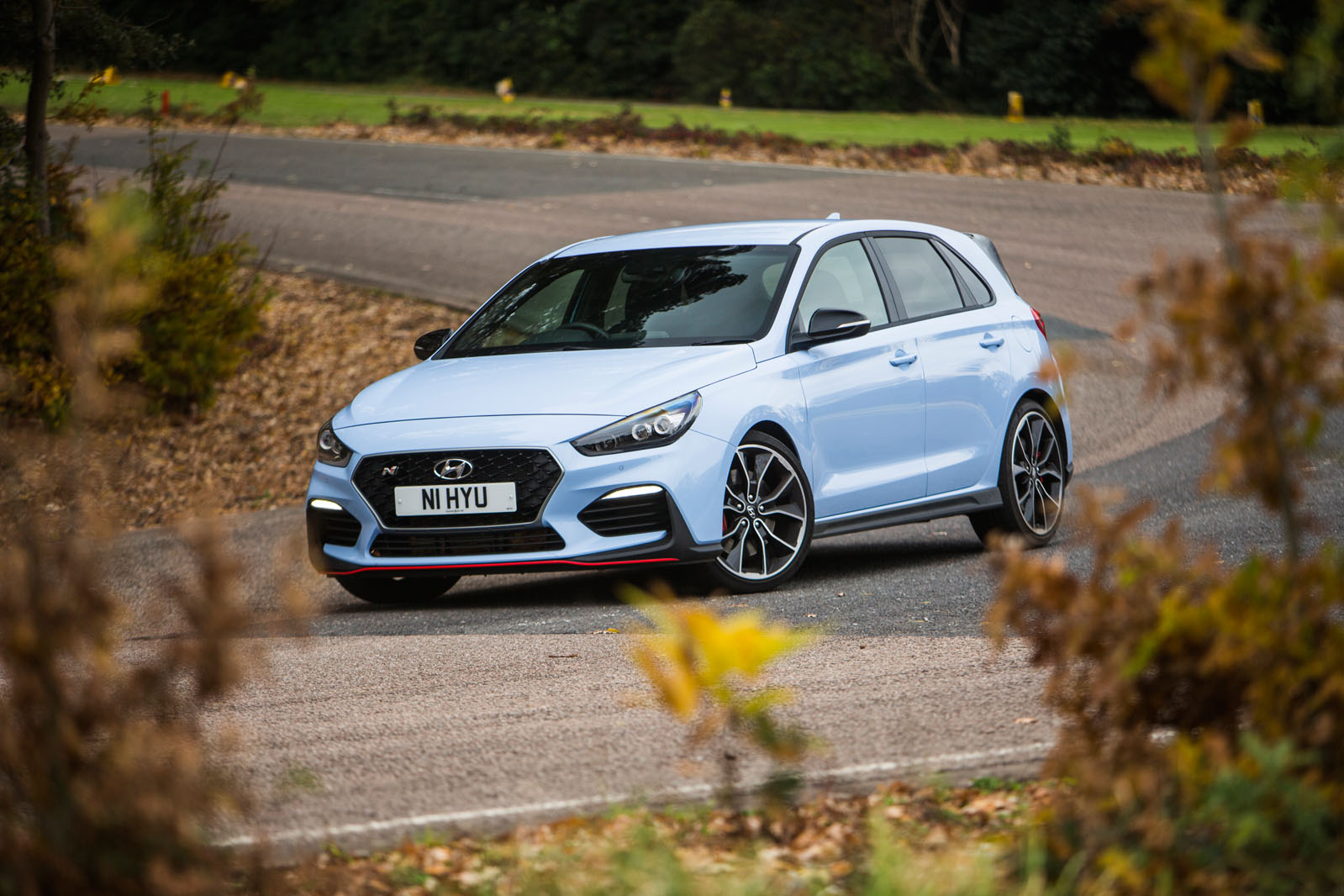Hyundai spent large and leveraged the contacts of its former BMW M division executive to the full to produce extensive chassis, suspension, powertrain and steering overhauls for this i30, so it’s no major shock to discover that there must have been little budget left for a performance makeover inside.
The i30 N’s cabin, like that of the regular Hyundai i30, is constructed out of too many monotone plastics to be particularly inviting or exciting.
The car’s baseline standard on perceived quality is reasonable but there are places where wobbly mouldings and shiny finishes should be improved upon. More conspicuous, though, is the absence of almost anything to lift the ambience above the humdrum.
That problem may have been exacerbated by the optional seats of our test car. The Performance-trim i30 N comes with part-leather electrically adjustable sports seats as standard, but these can be swapped back to the manually adjustable cloth sports seats of the lesser i30 N, should you want to save some weight.
Our test car had the rather plain grey cloth seats, and the difference they make is worth just over 12kg.
The car’s driving position and ergonomic layout are decent but not perfect. You sit in a slightly perched, bent-legged driving position typical of a hatchback, and get plenty of room at the controls, supported fairly well but not brilliantly by the seat bolsters.
Regrettably, there’s too much space between the brake and accelerator pedals for easy bridging during heel-and-toe shifting, should you prefer to take care of it yourself rather than use the standard rev-matching feature.
The restrained shade of pale blue used to illuminate minor switchgear doesn’t look at home in a performance machine and it’s used most notably on the oversized toggle buttons on the steering wheel spokes.
The car has five drive modes – Normal, Sport, Eco, Custom and N – but if you want to access Custom or N, you need to use the toggle button on the right. Quite why one drive mode button for all five modes wouldn’t suffice is a bit bewildering.
The 8.0in touchscreen infotainment system you get as standard in the i30 N has a freestanding tablet-like screen with decent display resolution and clarity and plenty of functionality.
Unlike some, it features shortcut buttons on either side of the screen that make it easy to hop between menus without having to navigate via a home screen, and although it often takes a while to respond to inputs, that fact alone – plus the convenience of anchoring your left arm on the surround of the system before prodding with your thumb – makes it fairly easy to use.
The system has voice recognition that works quite well for certain functions.
It does DAB and smartphone mirroring for both Apple and Android handsets and gives you a wireless charging pad for Qi-standard phones, too. None of Hyundai’s competitors are quite that generous with their standard kit tally.
The factory-fit navigation system is clear and easy to follow, although it is a little short on mapping detail and points of interest.


